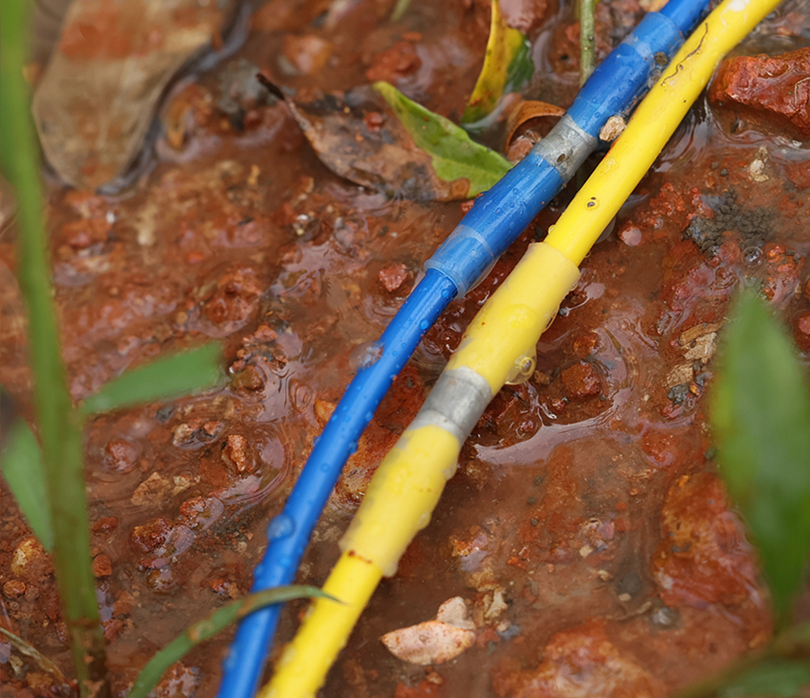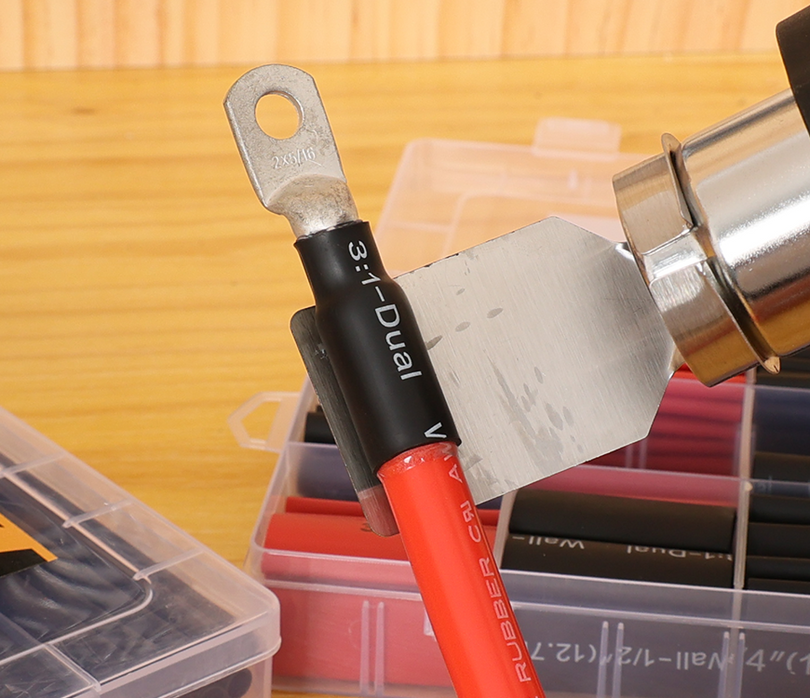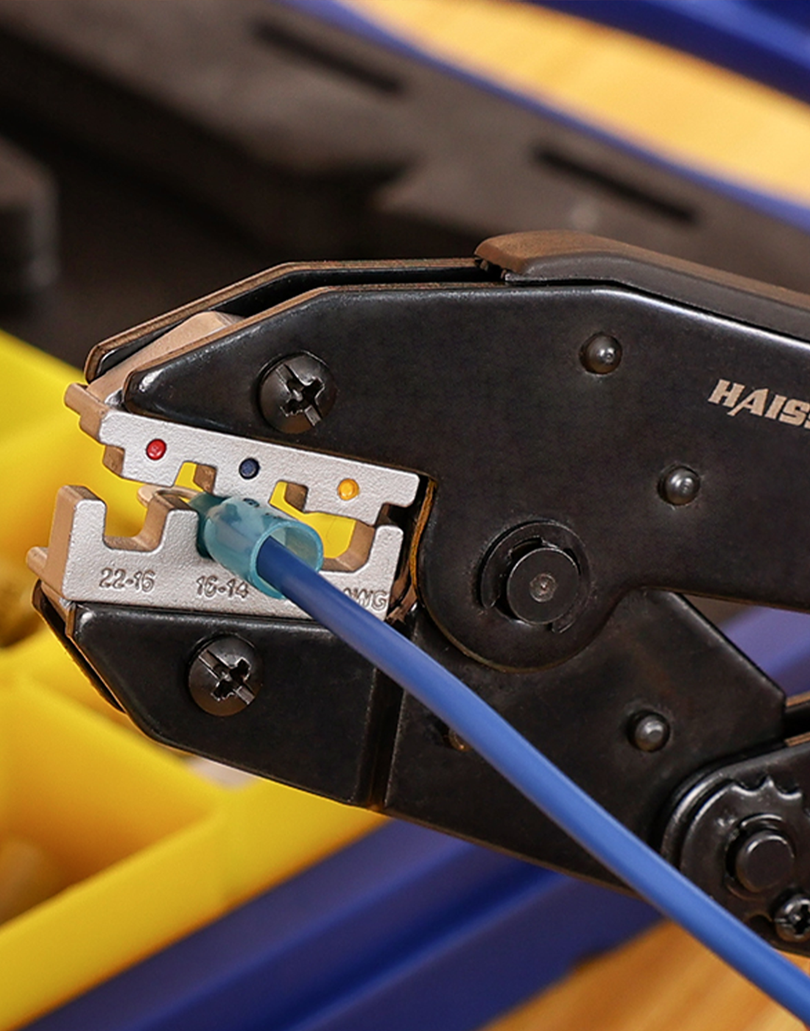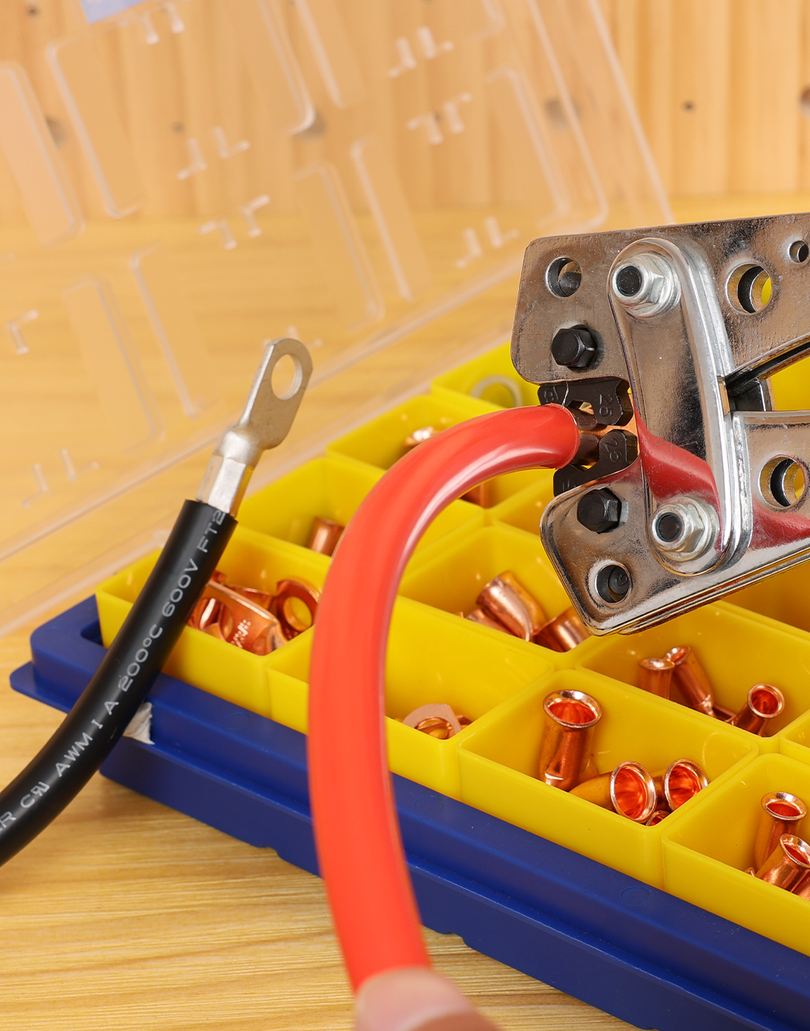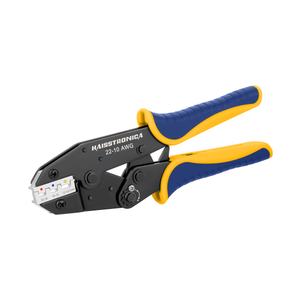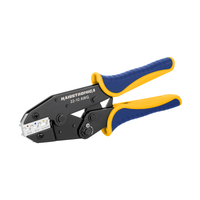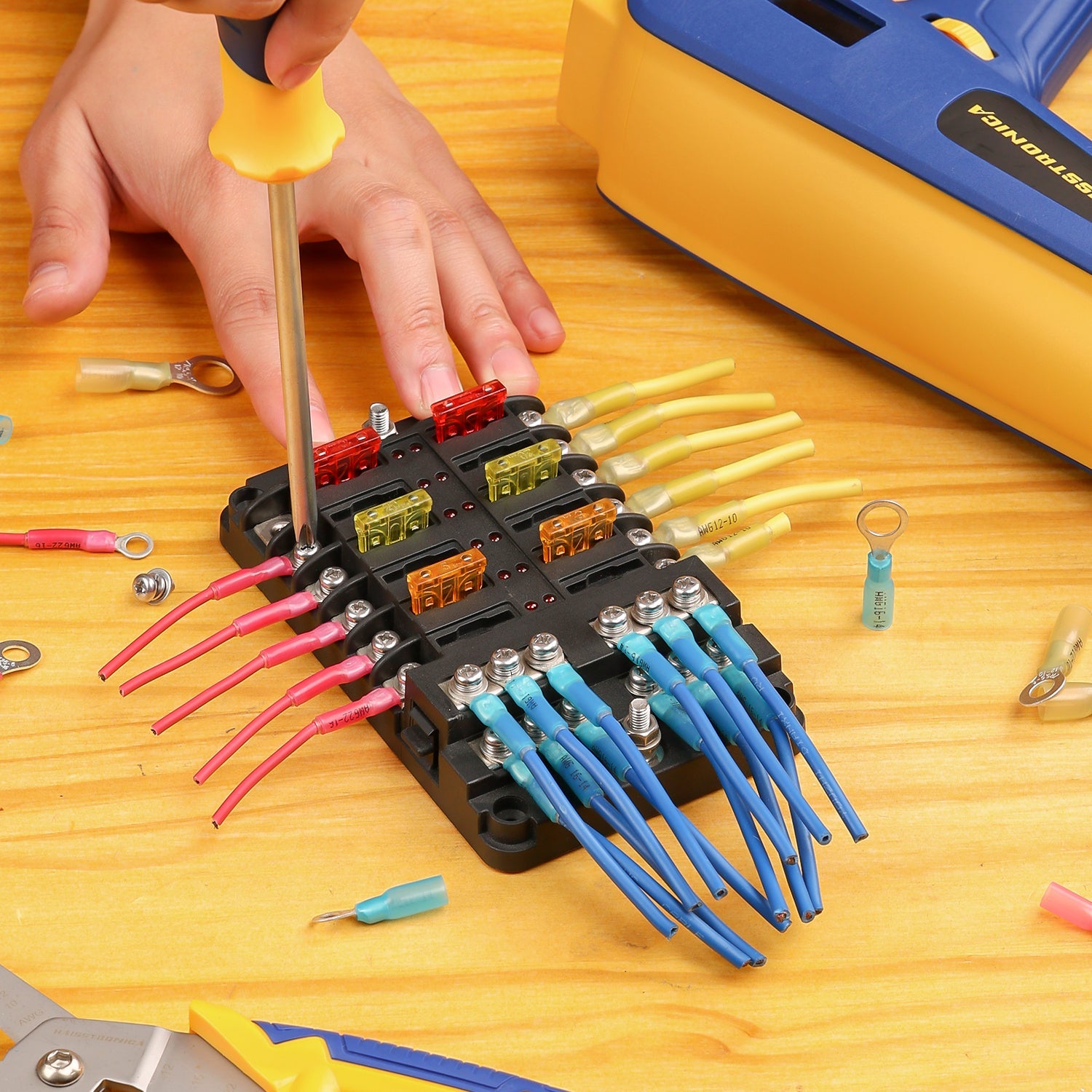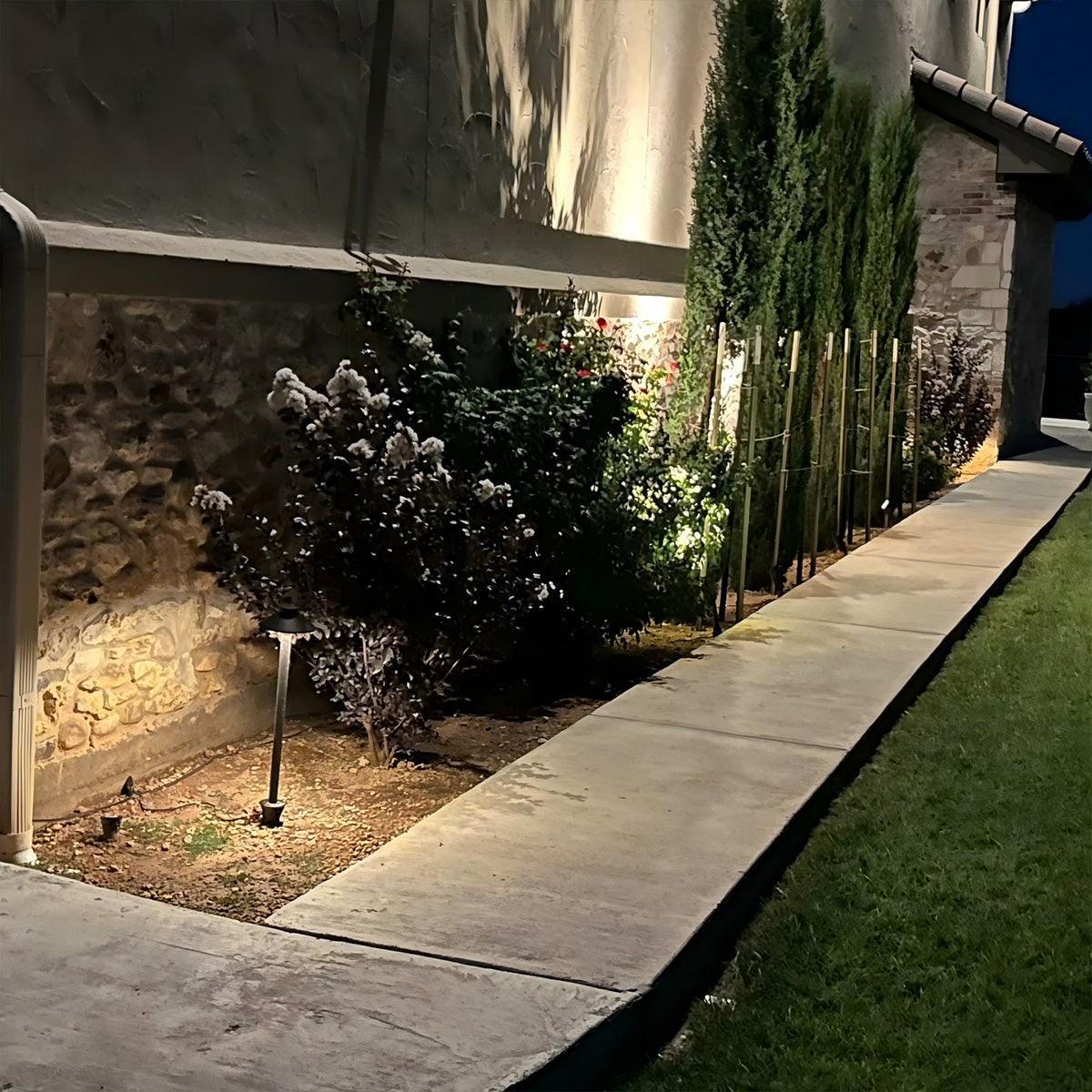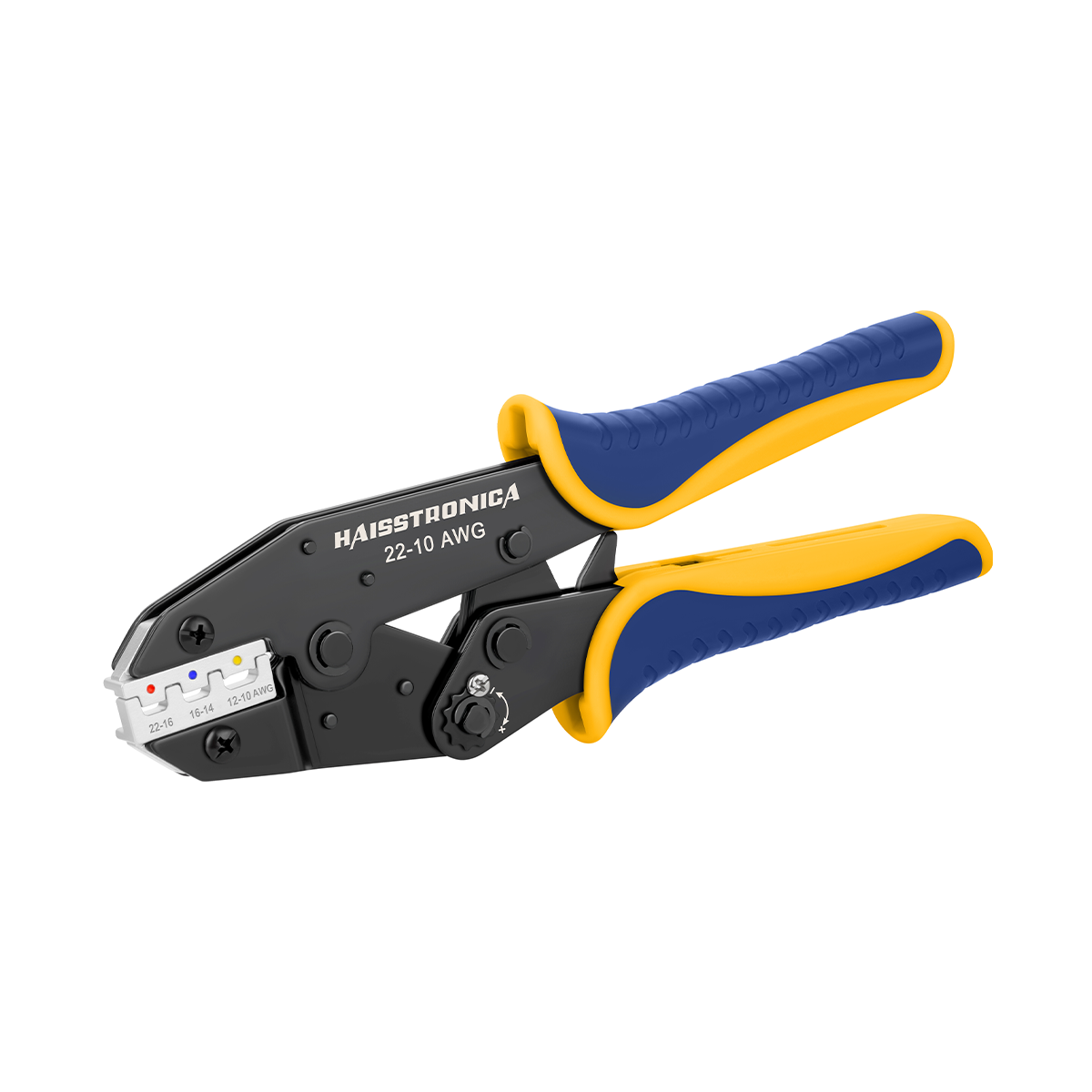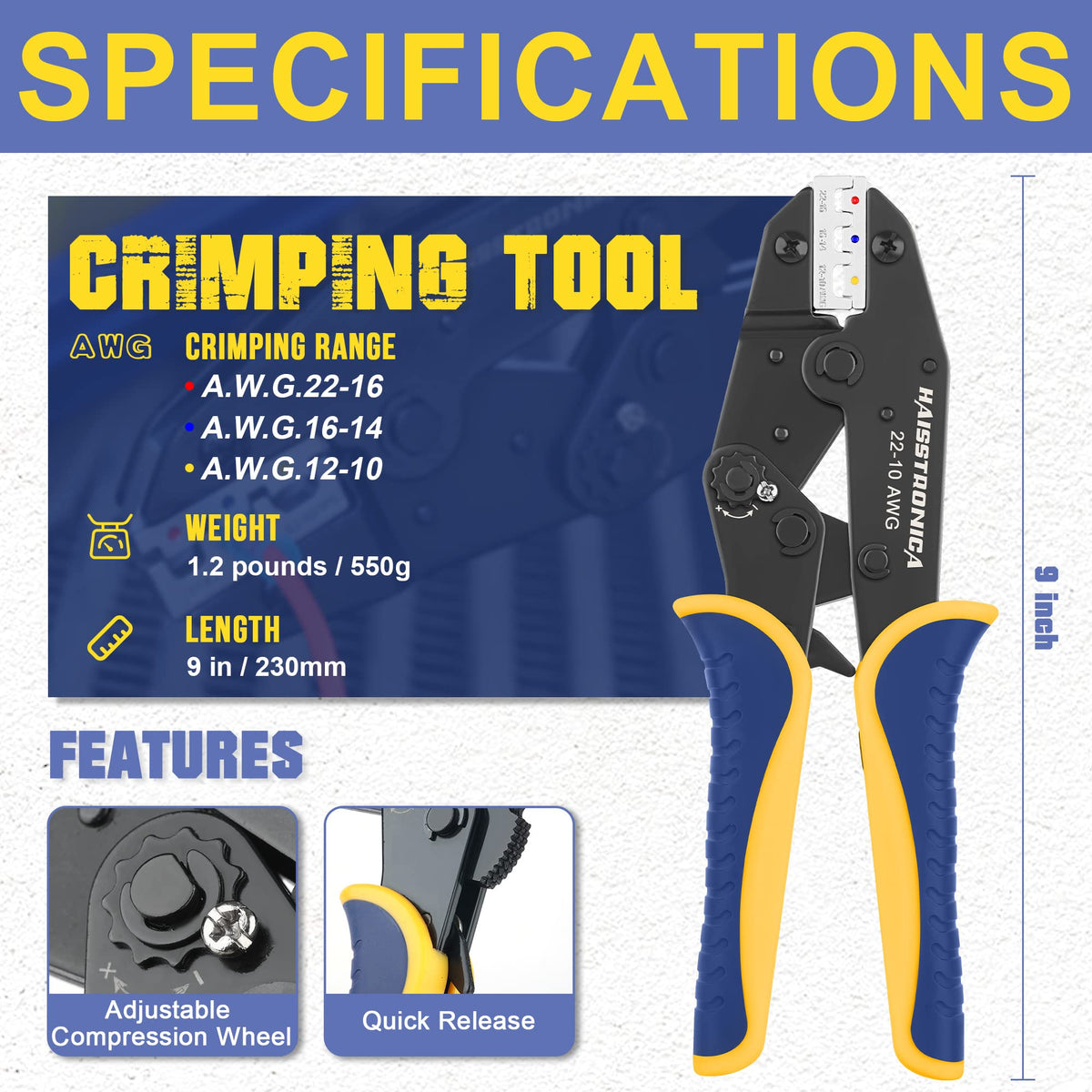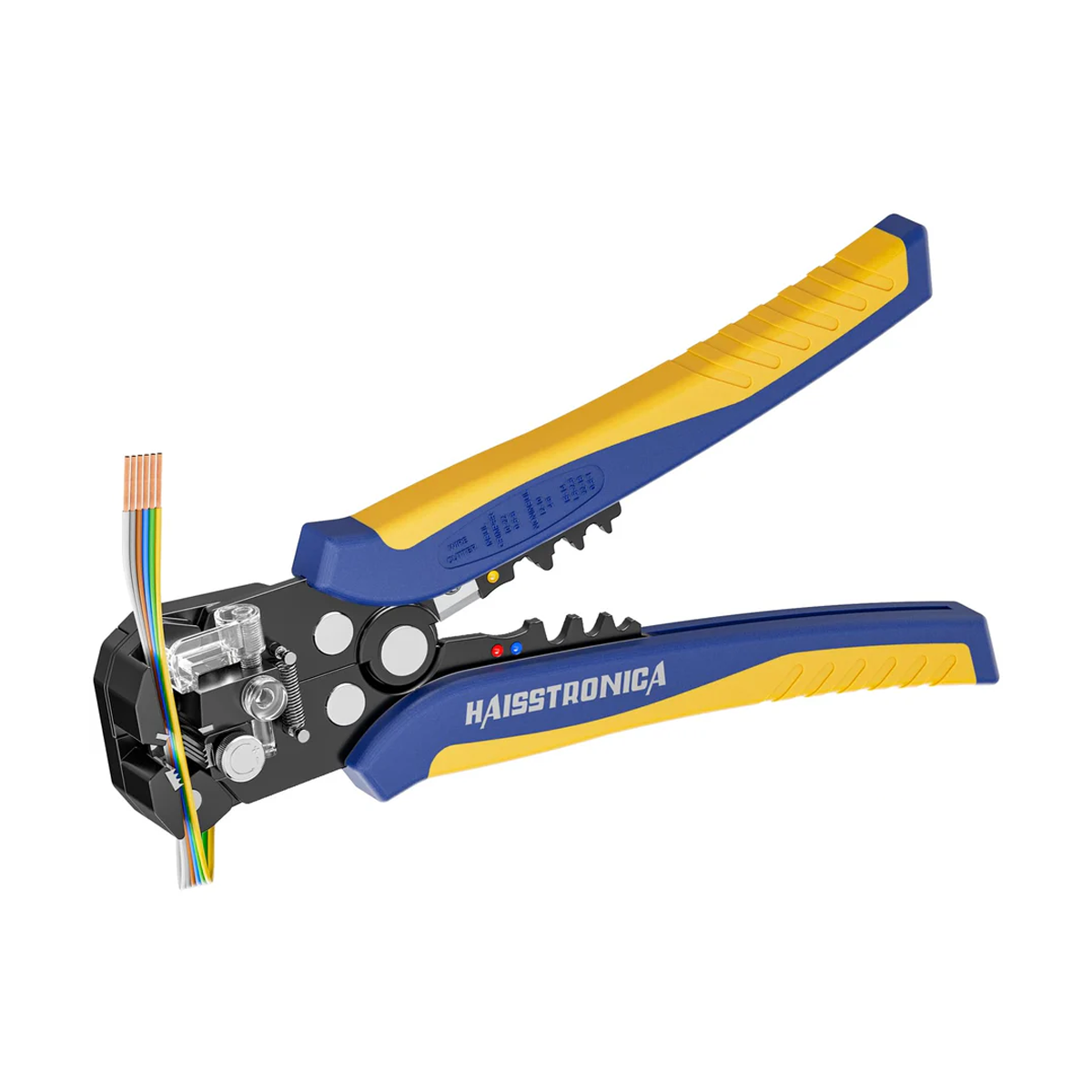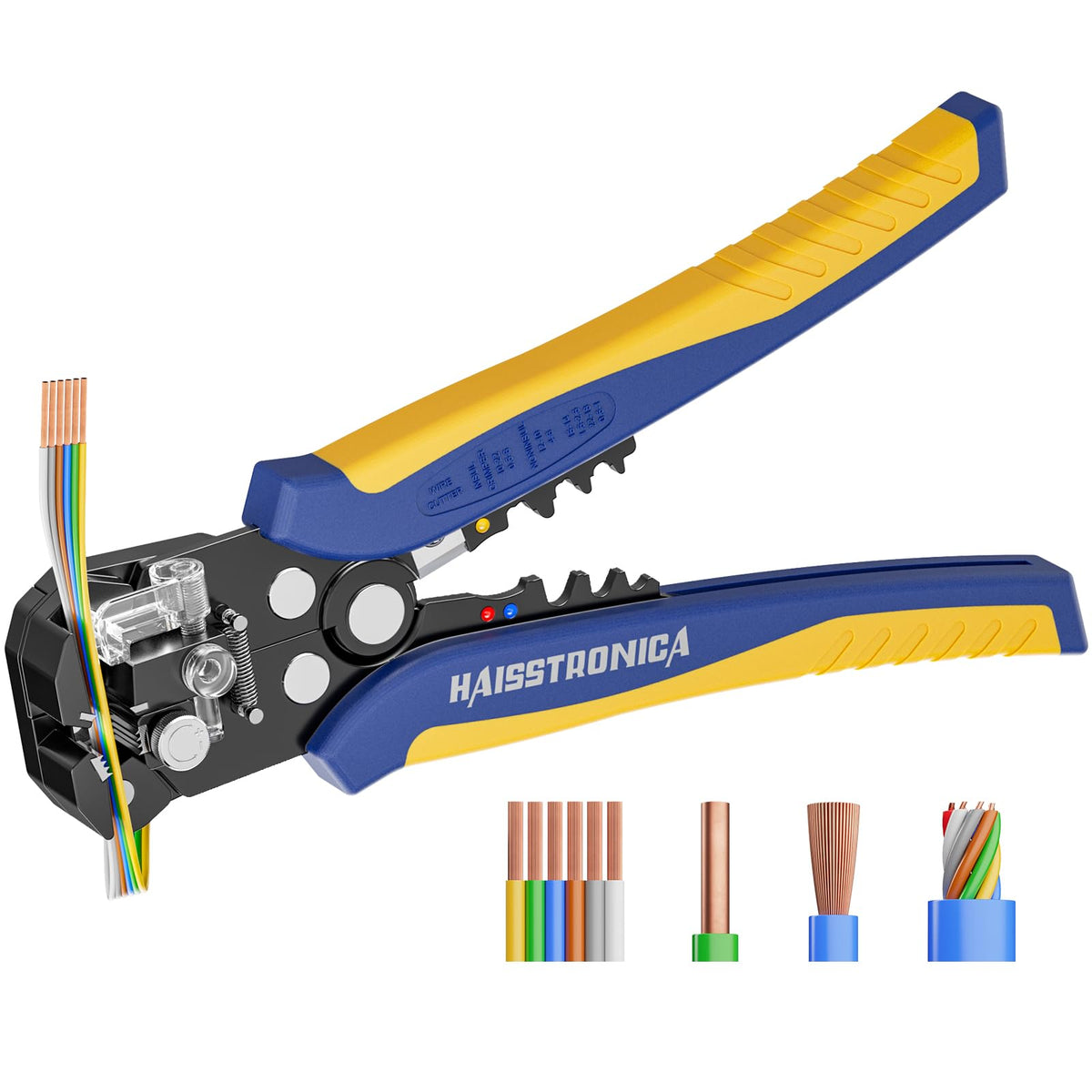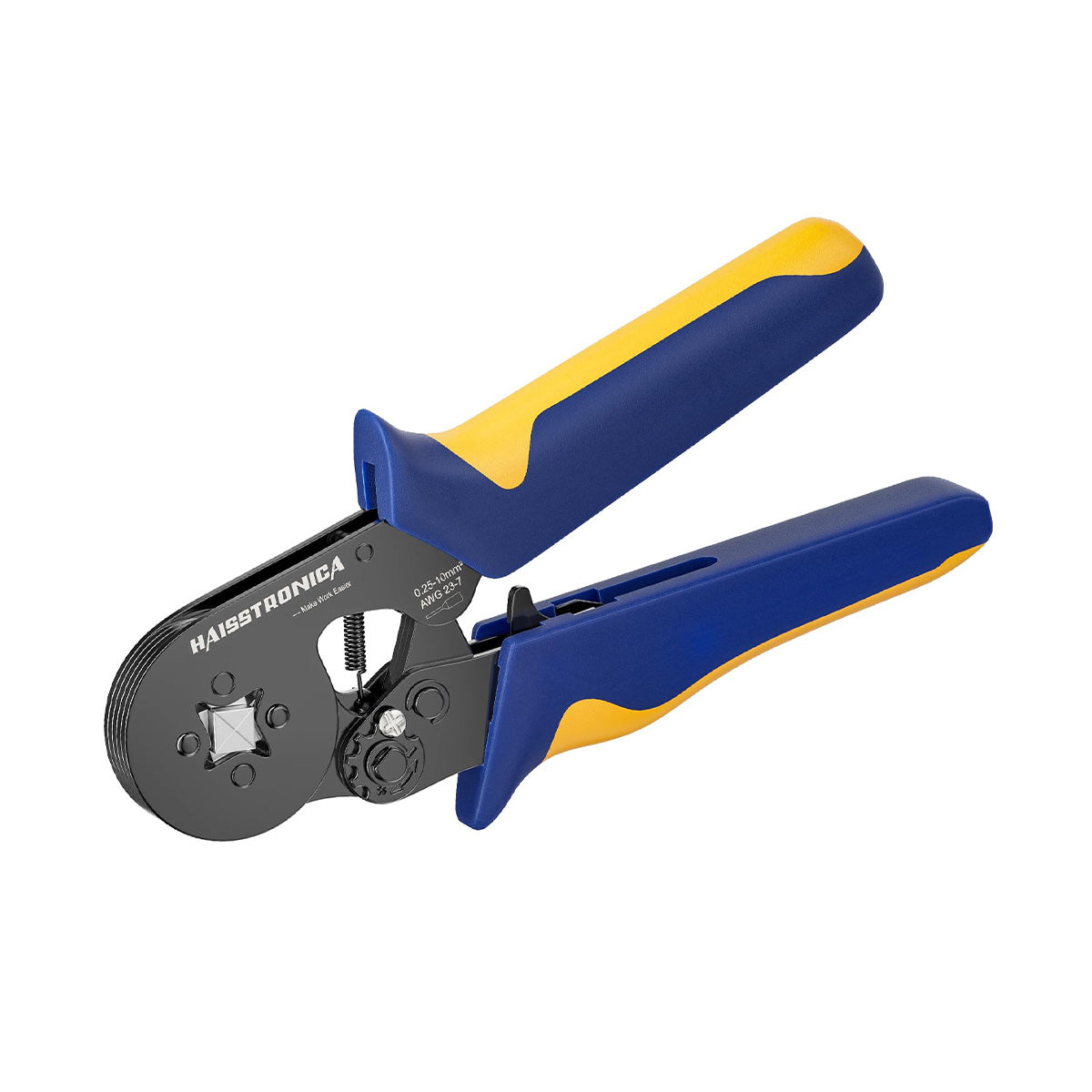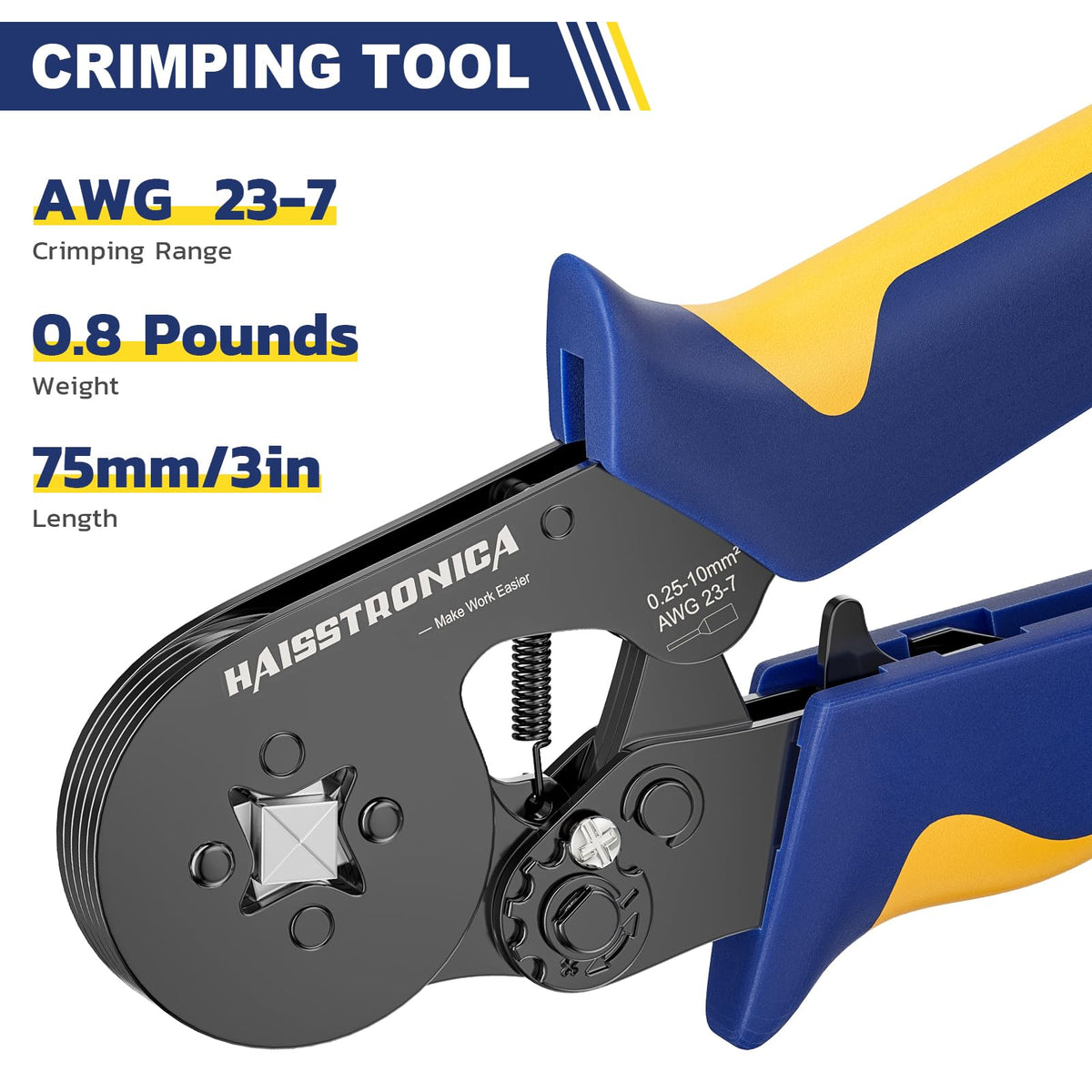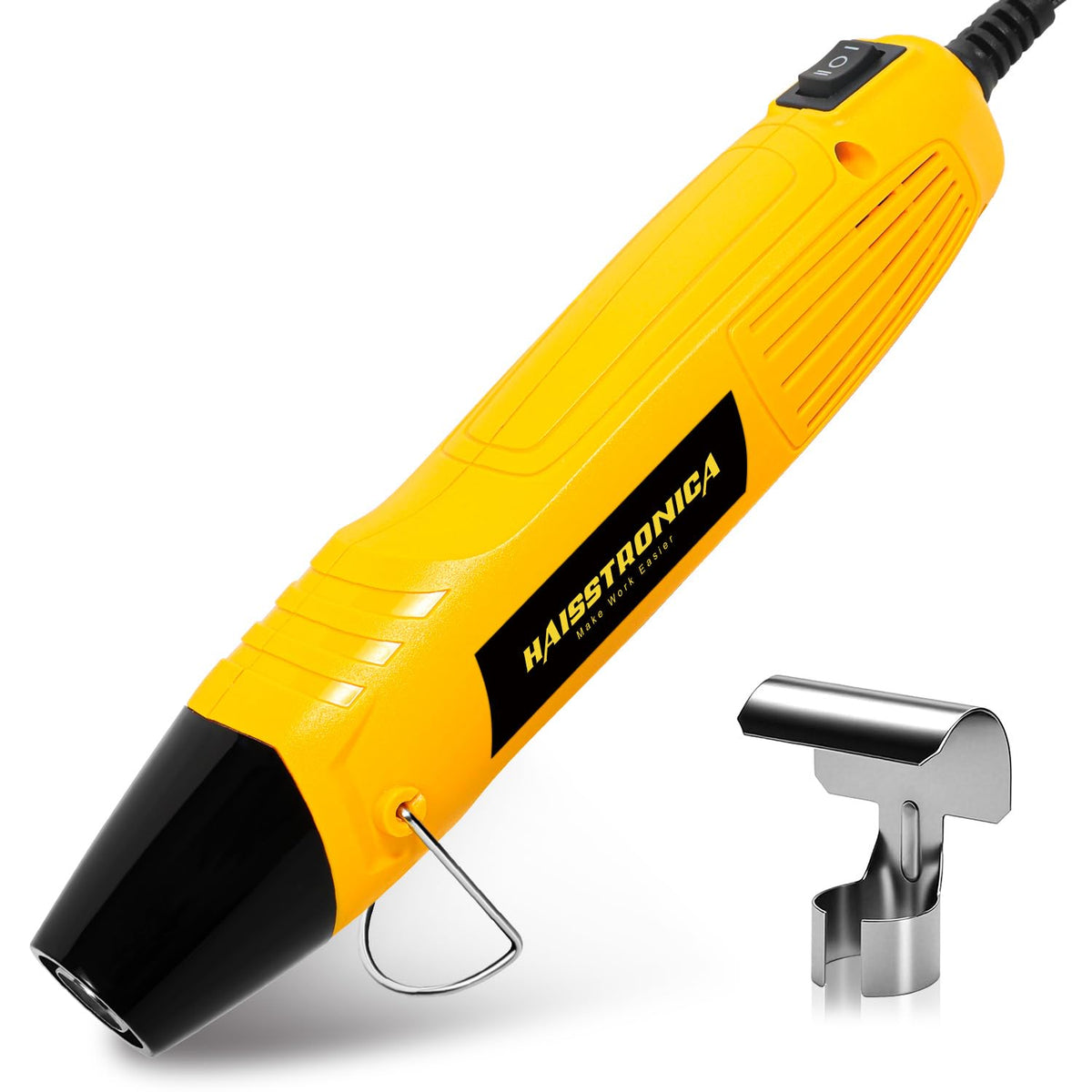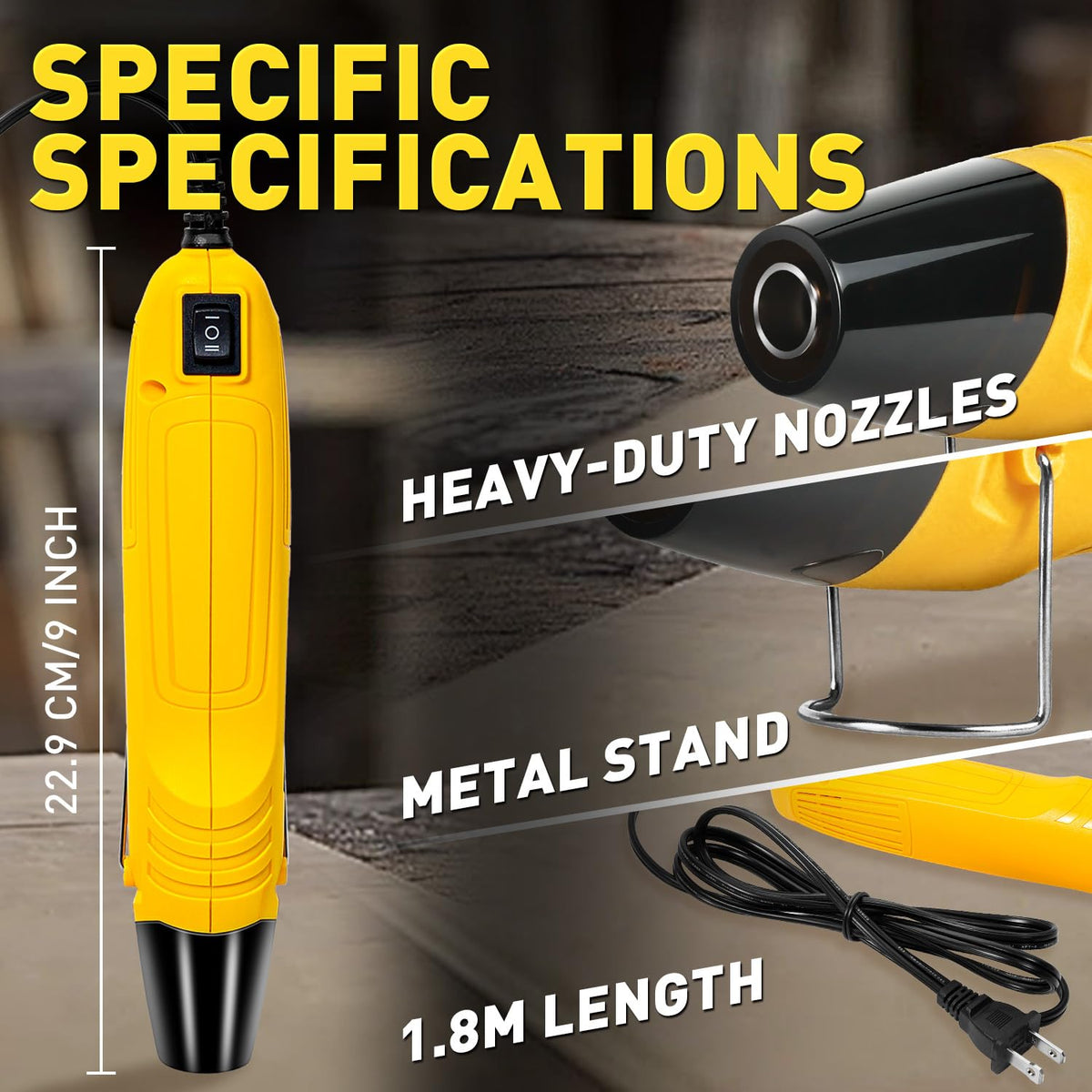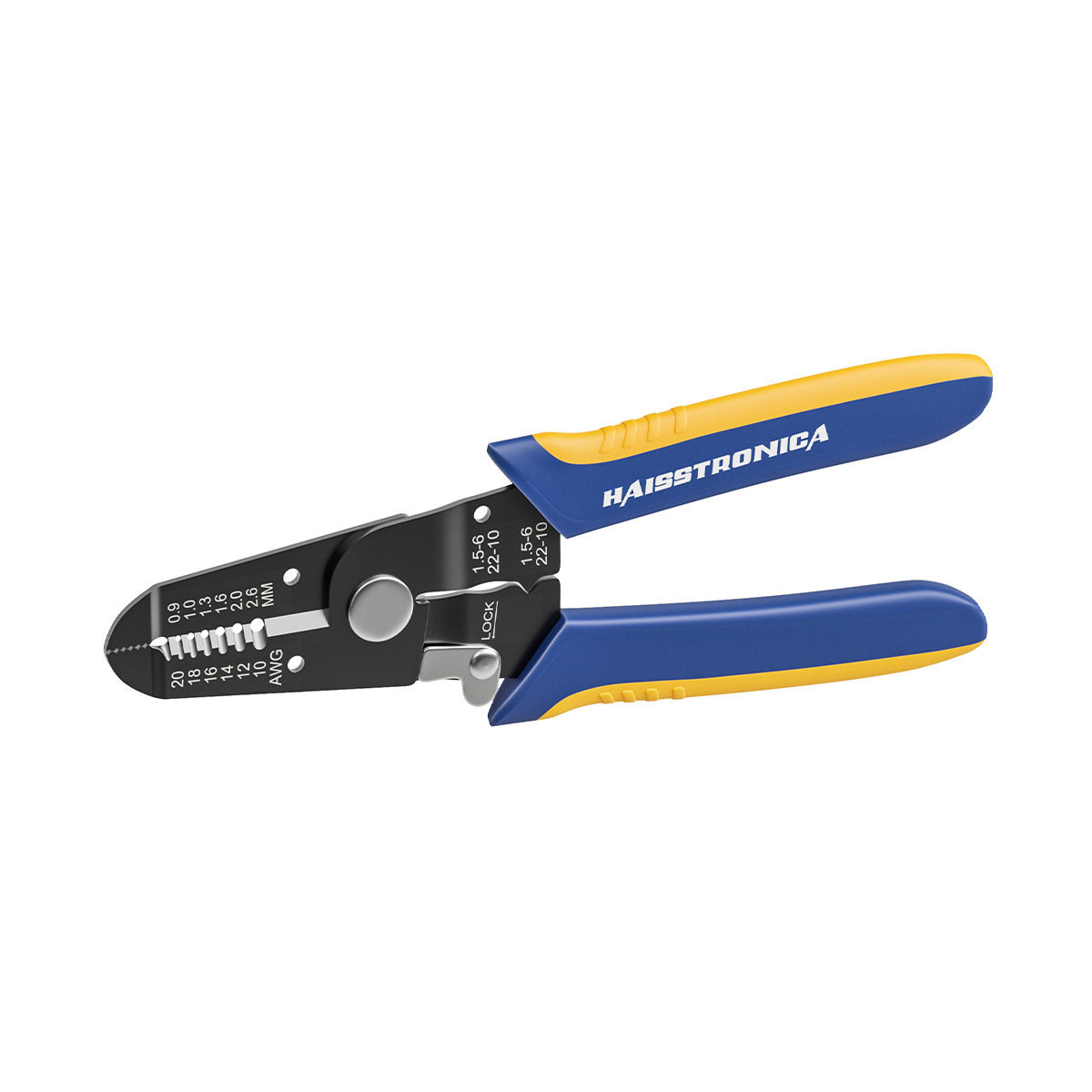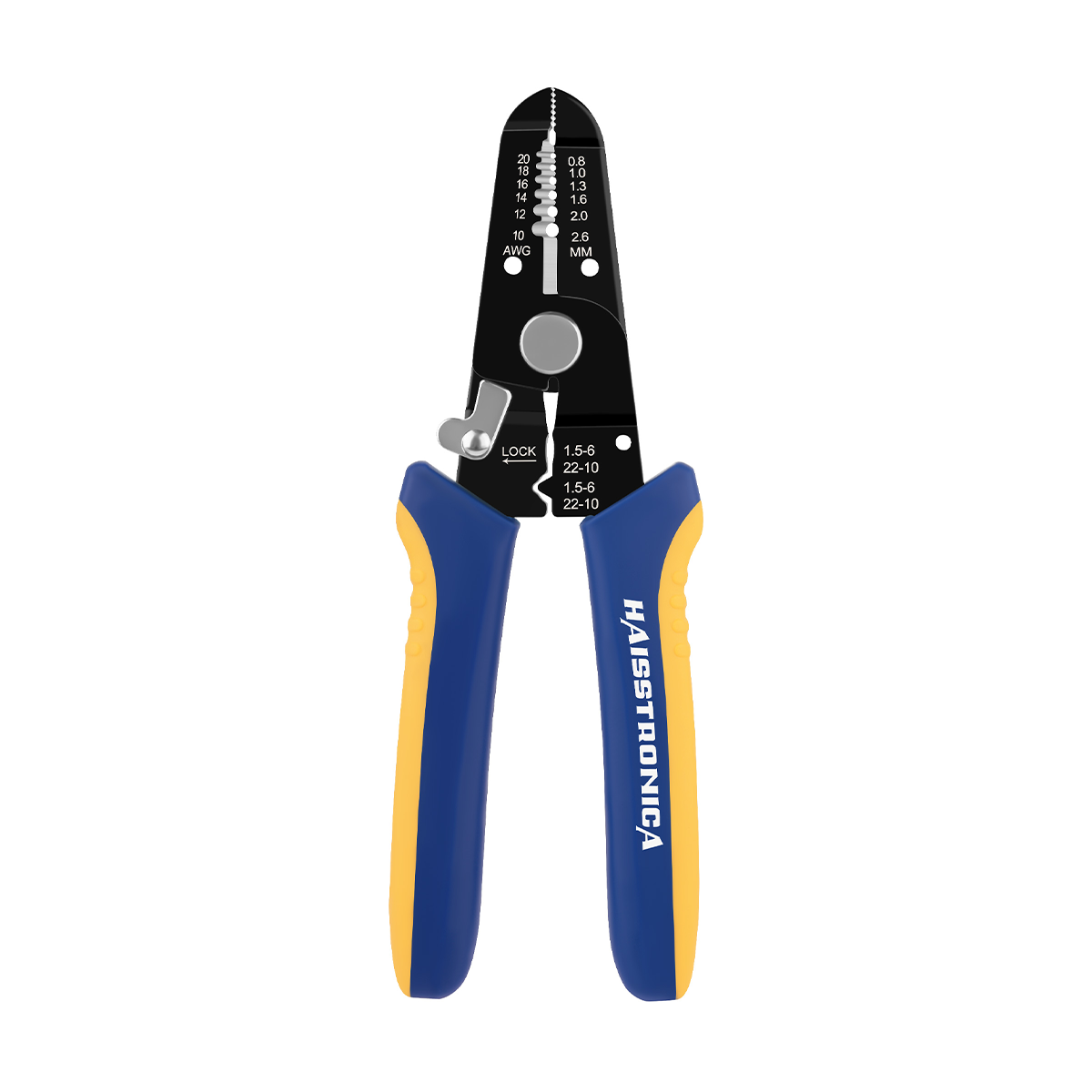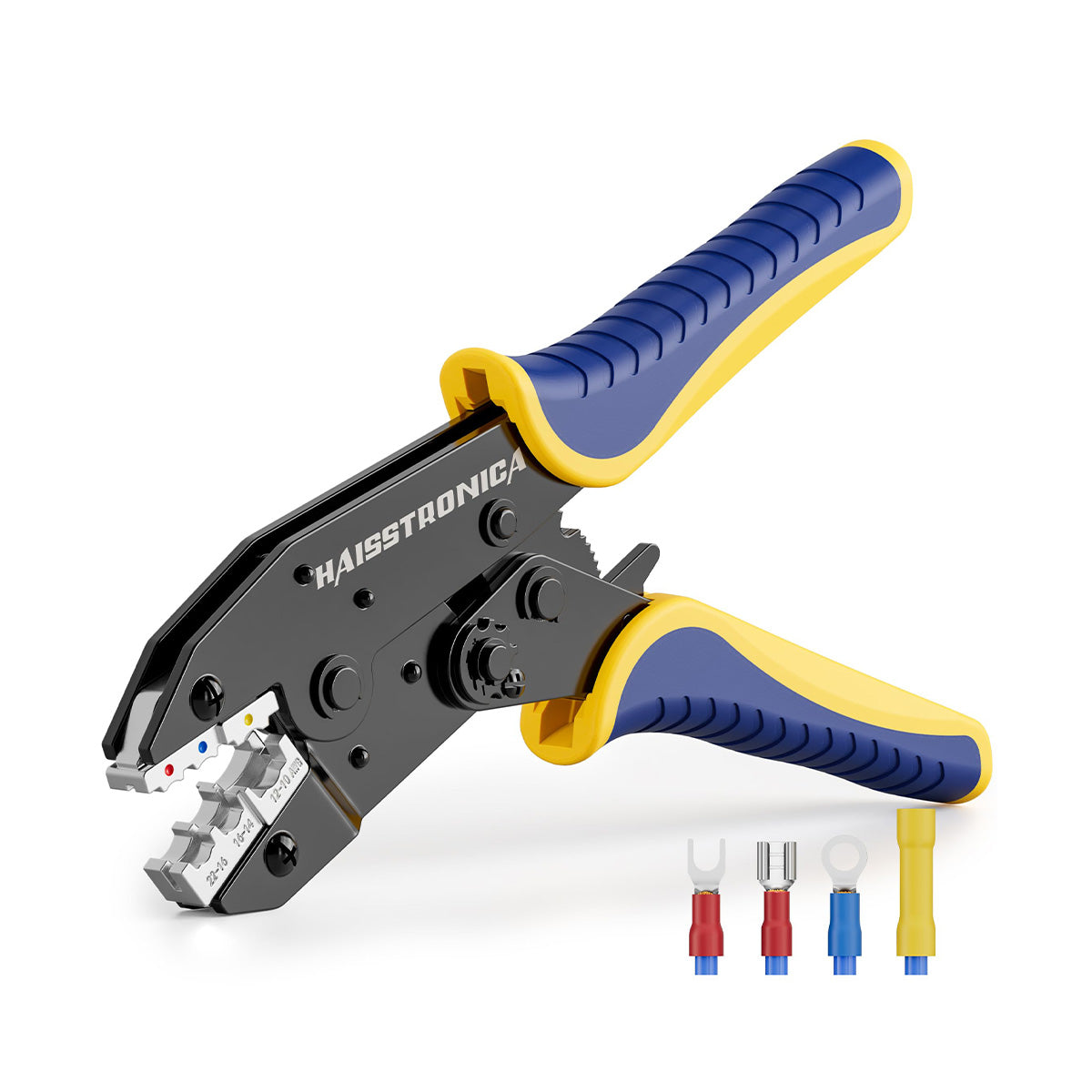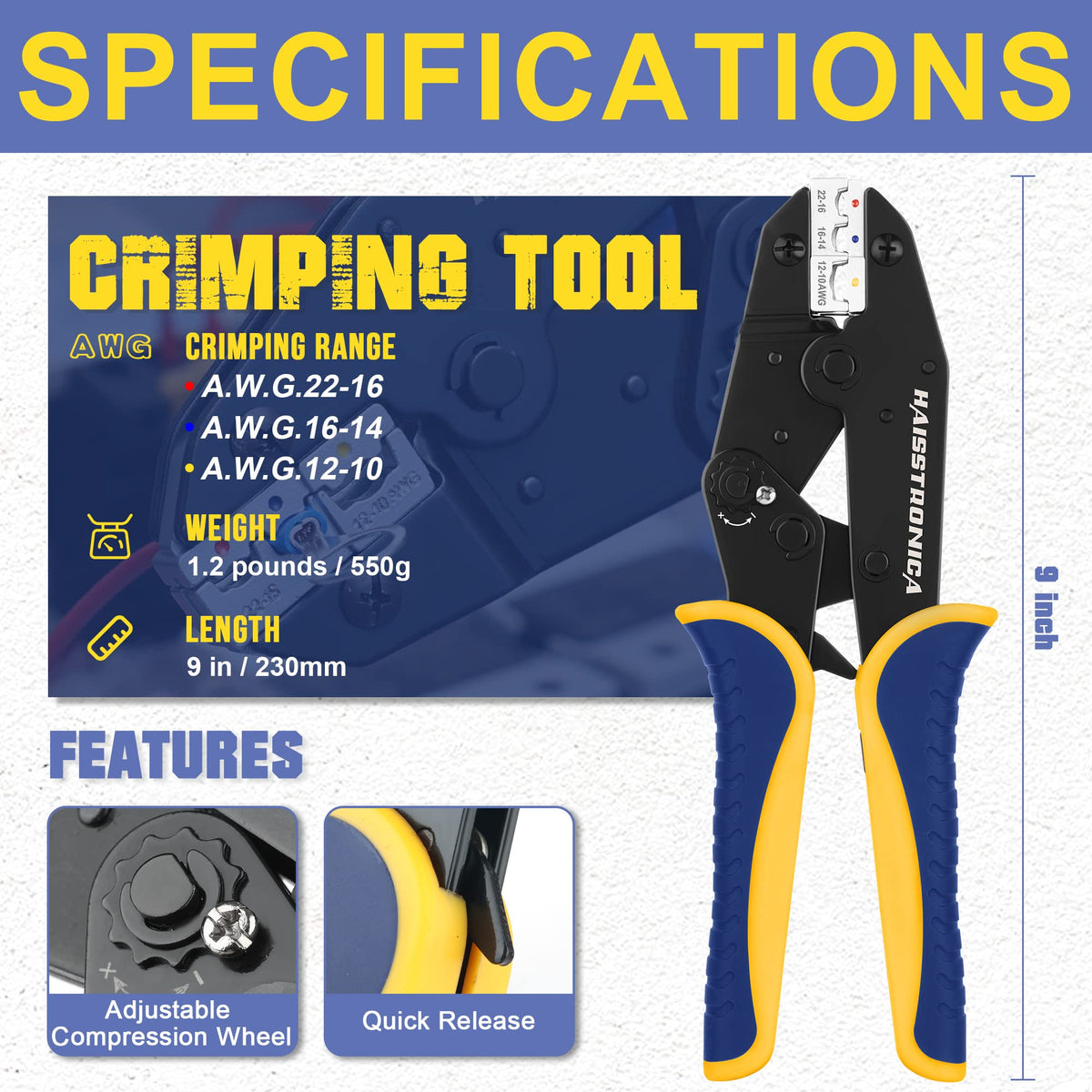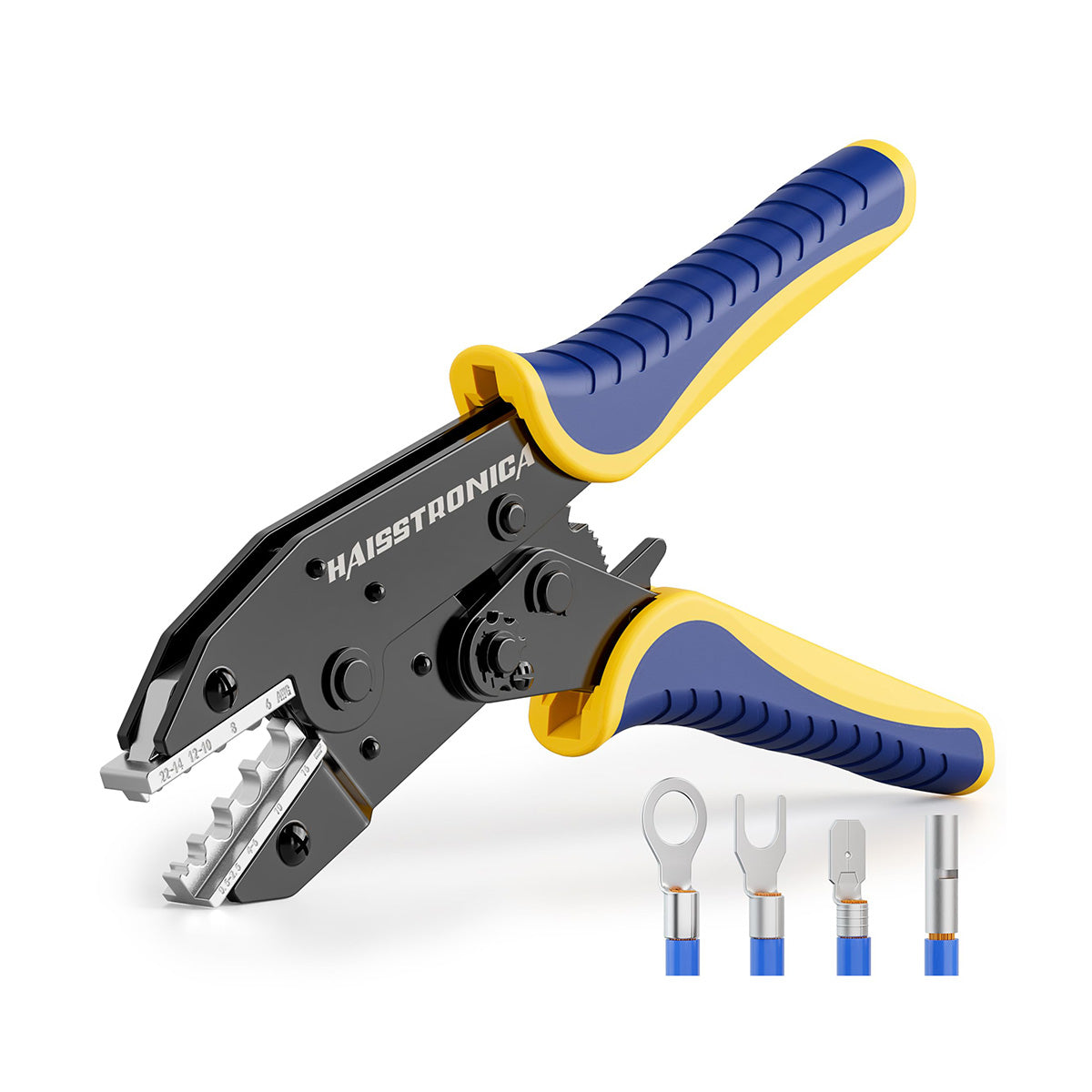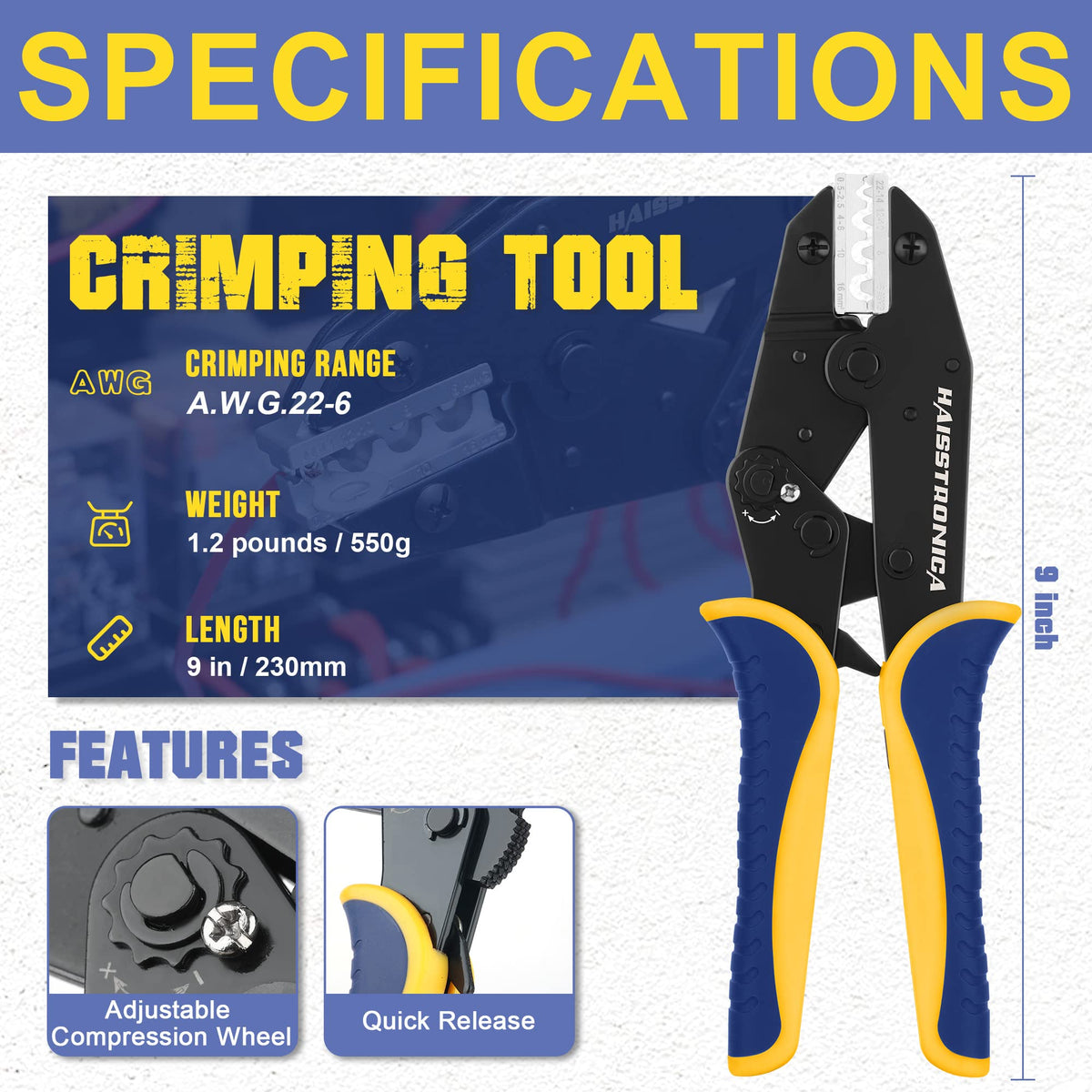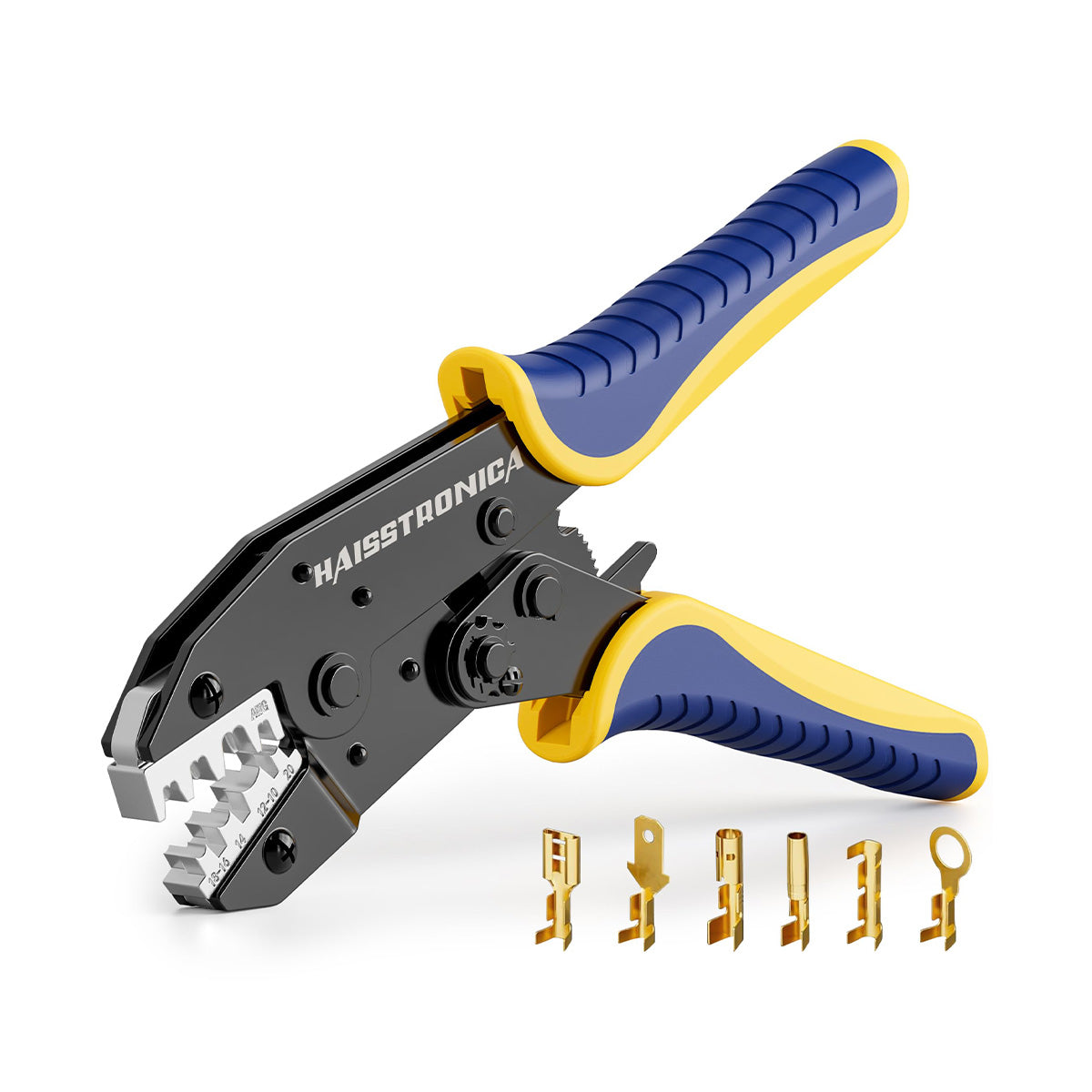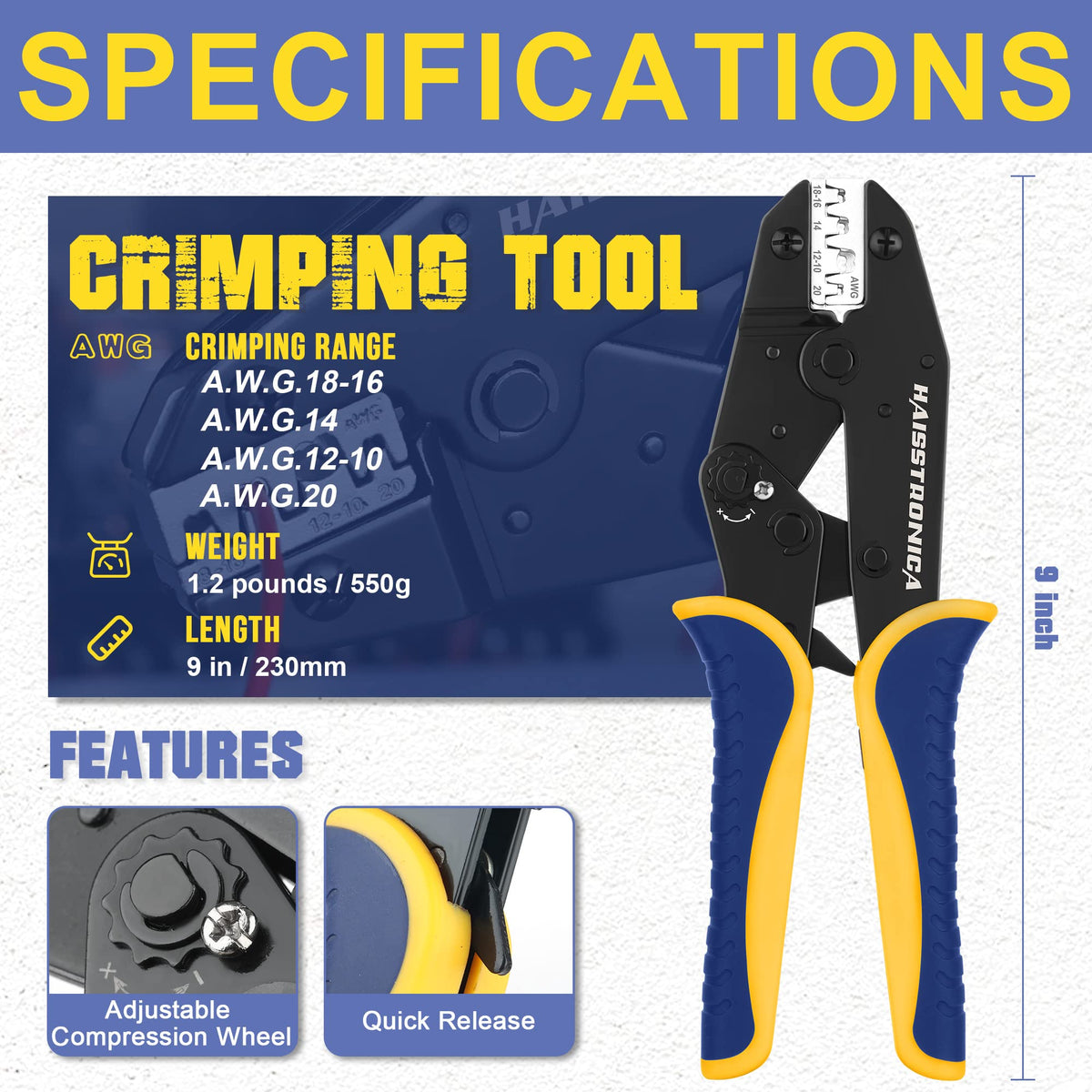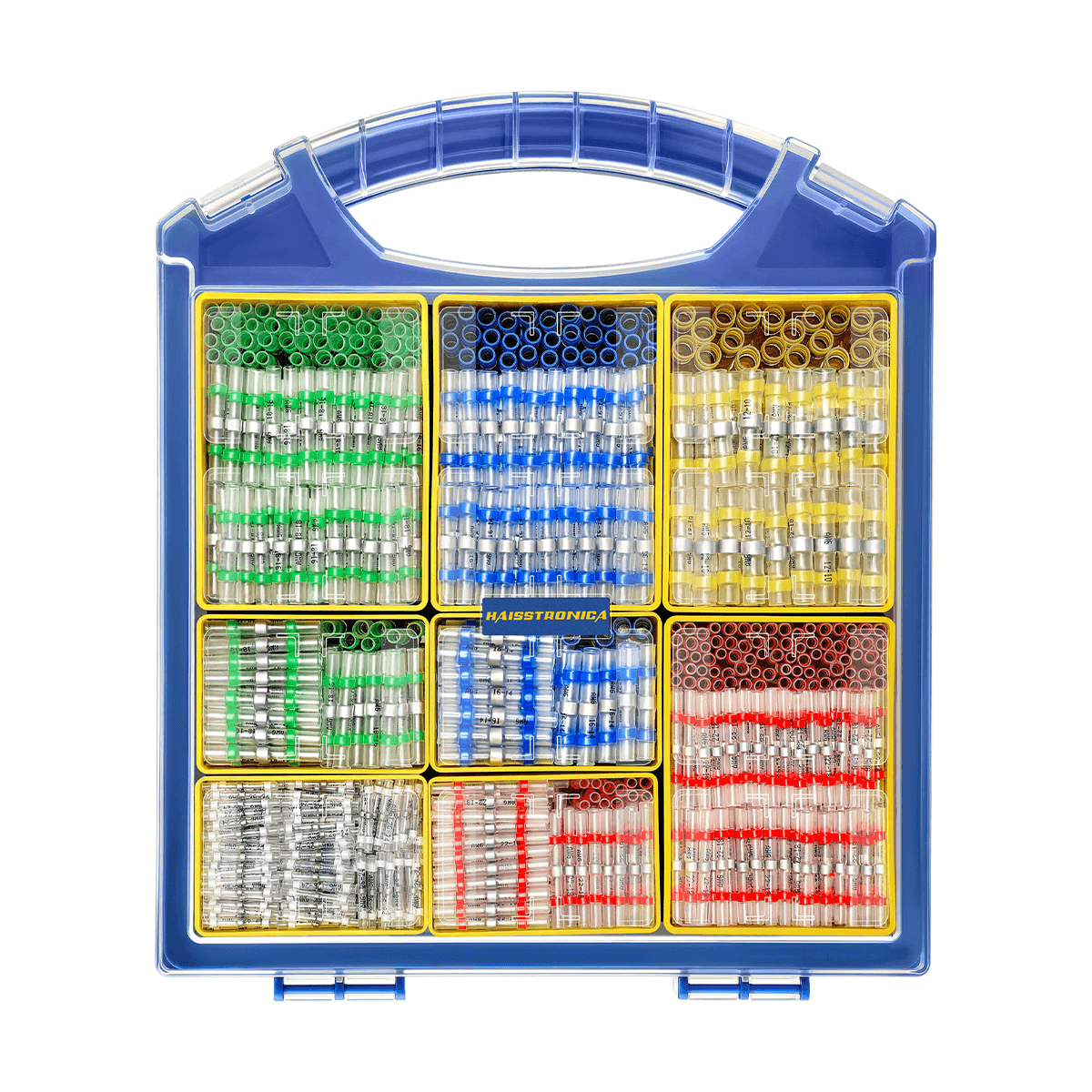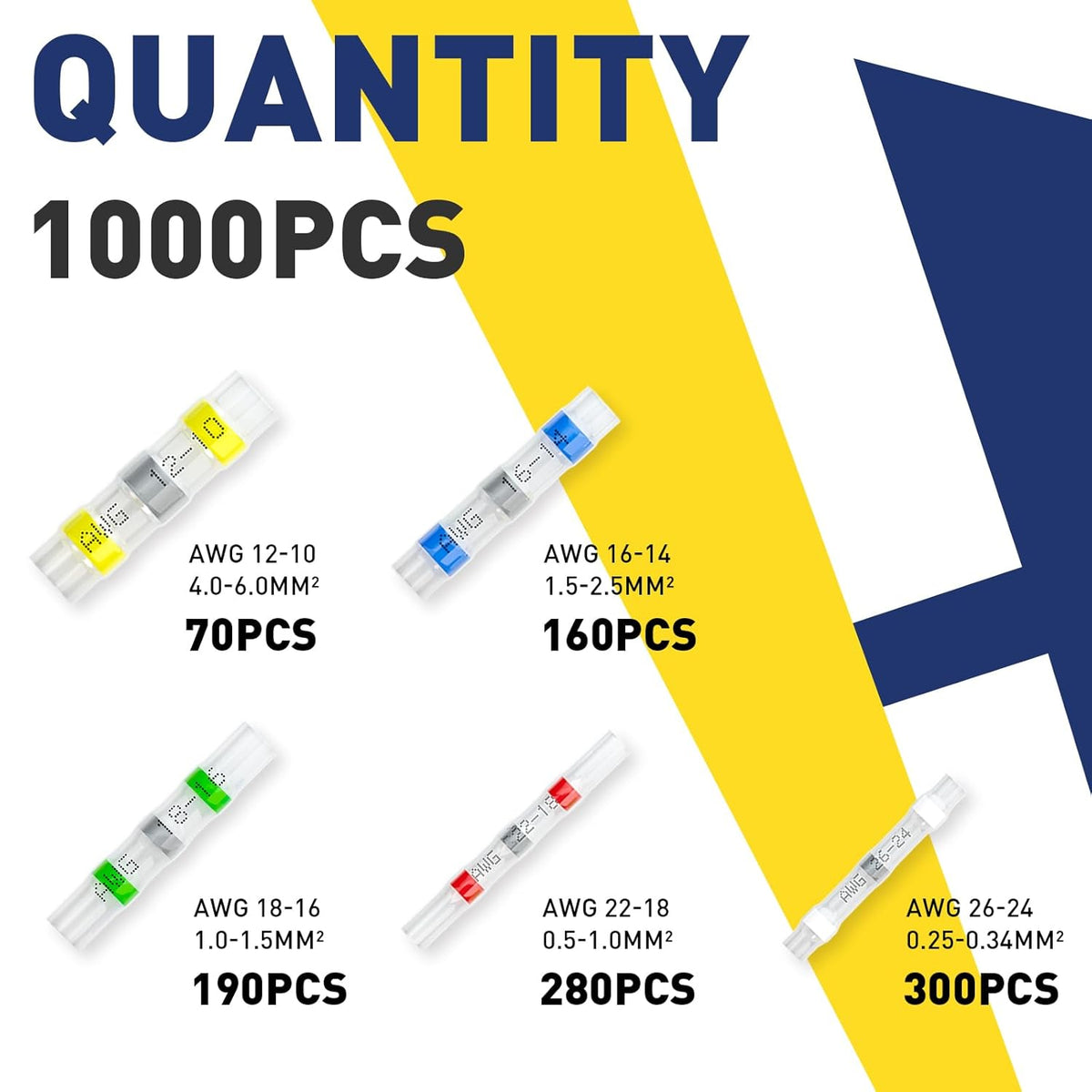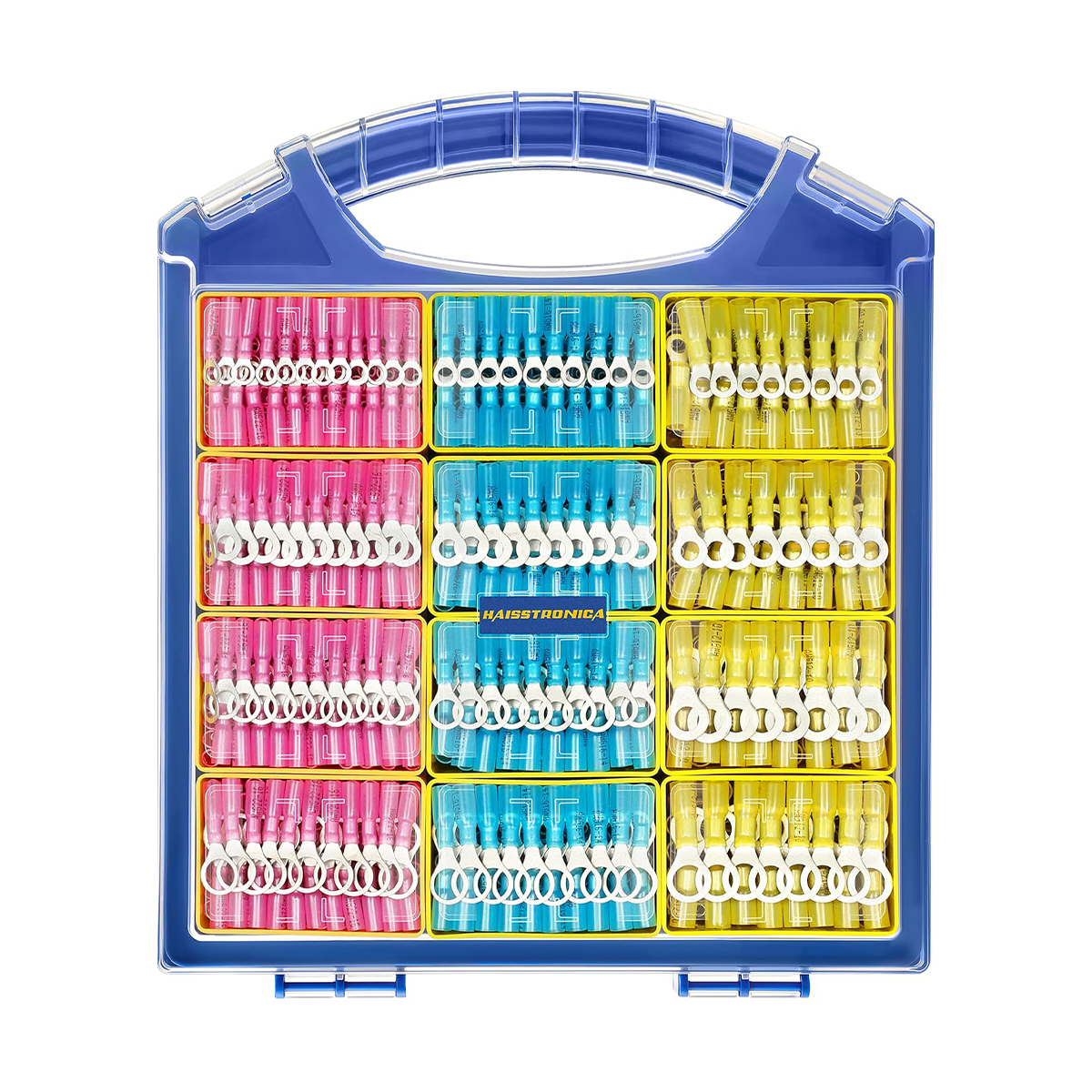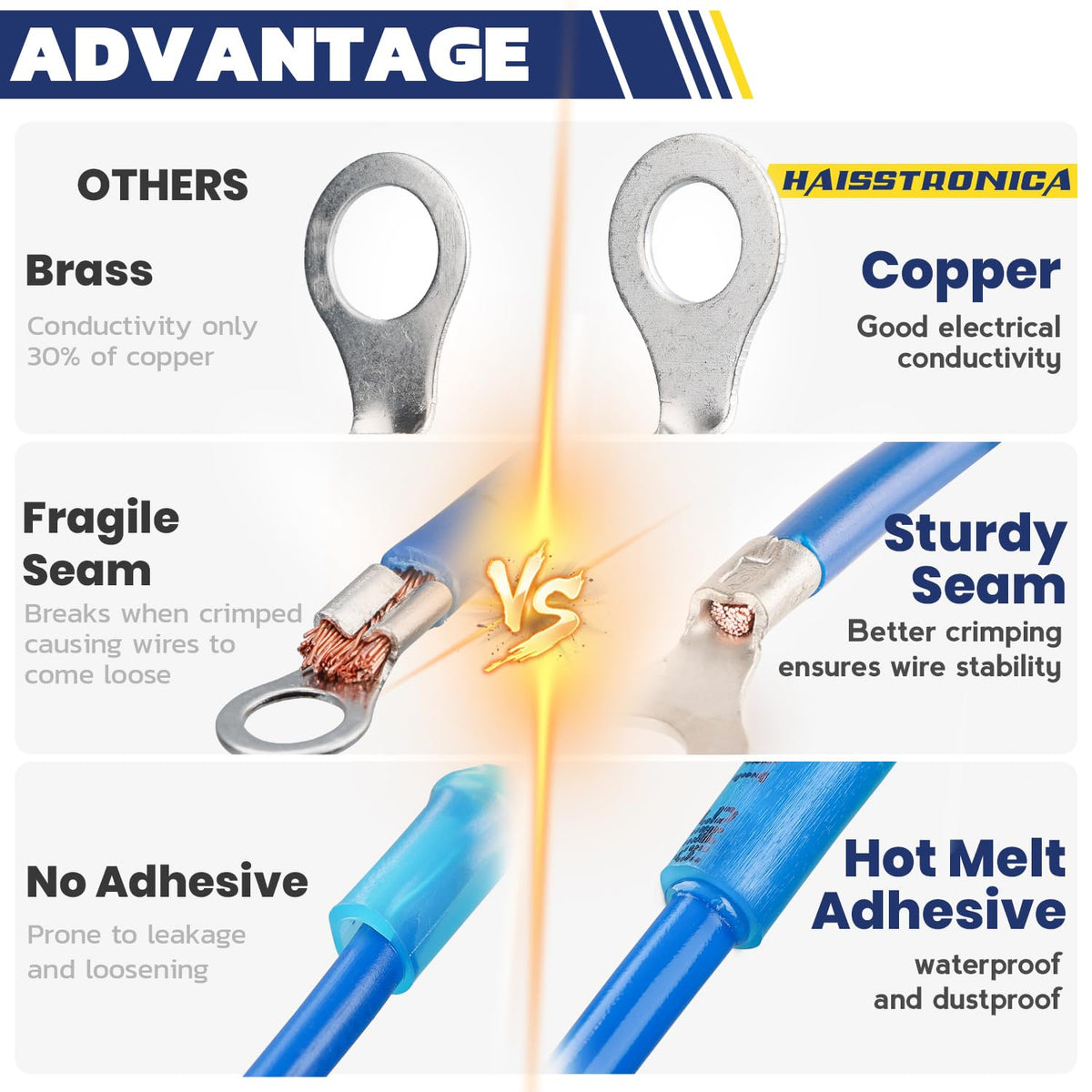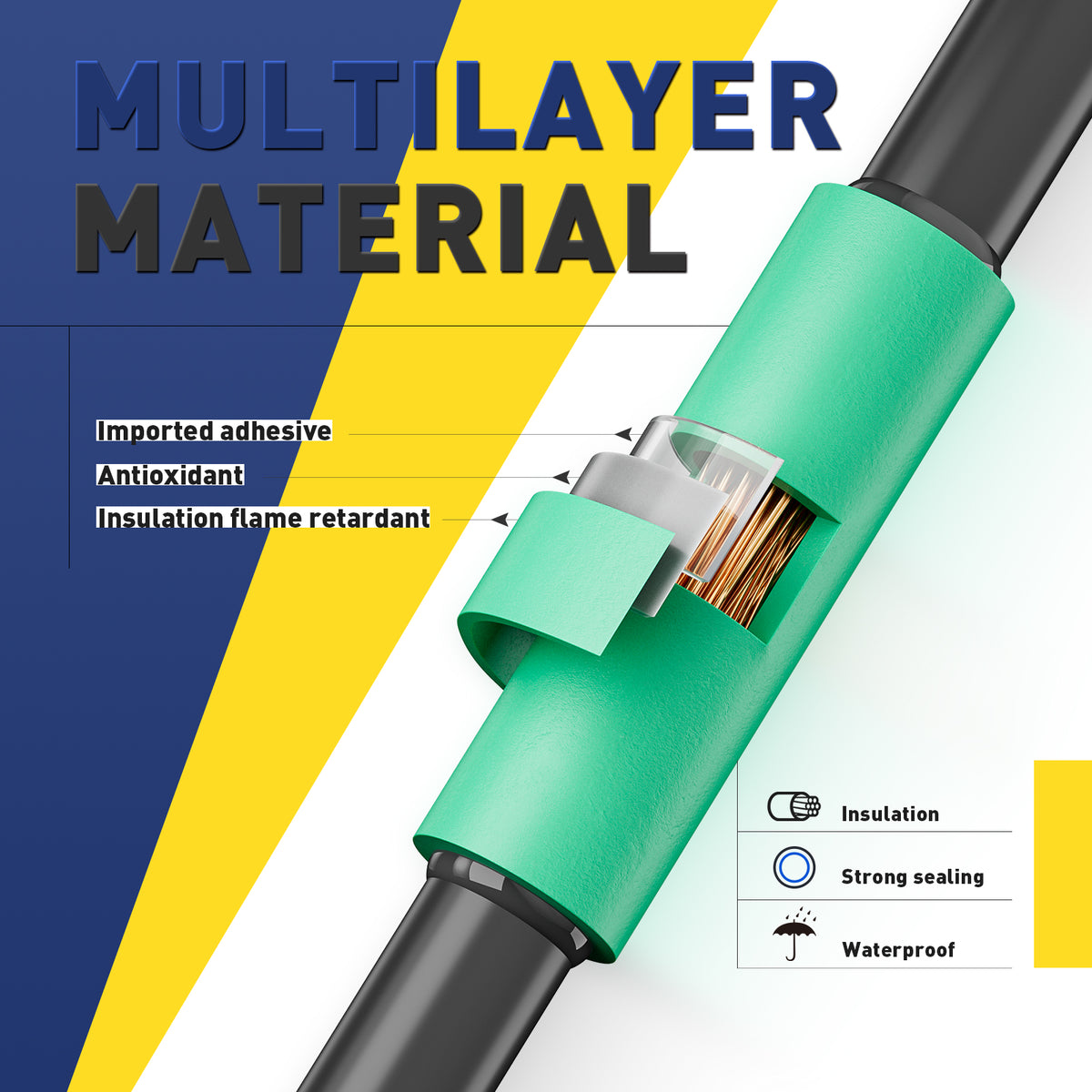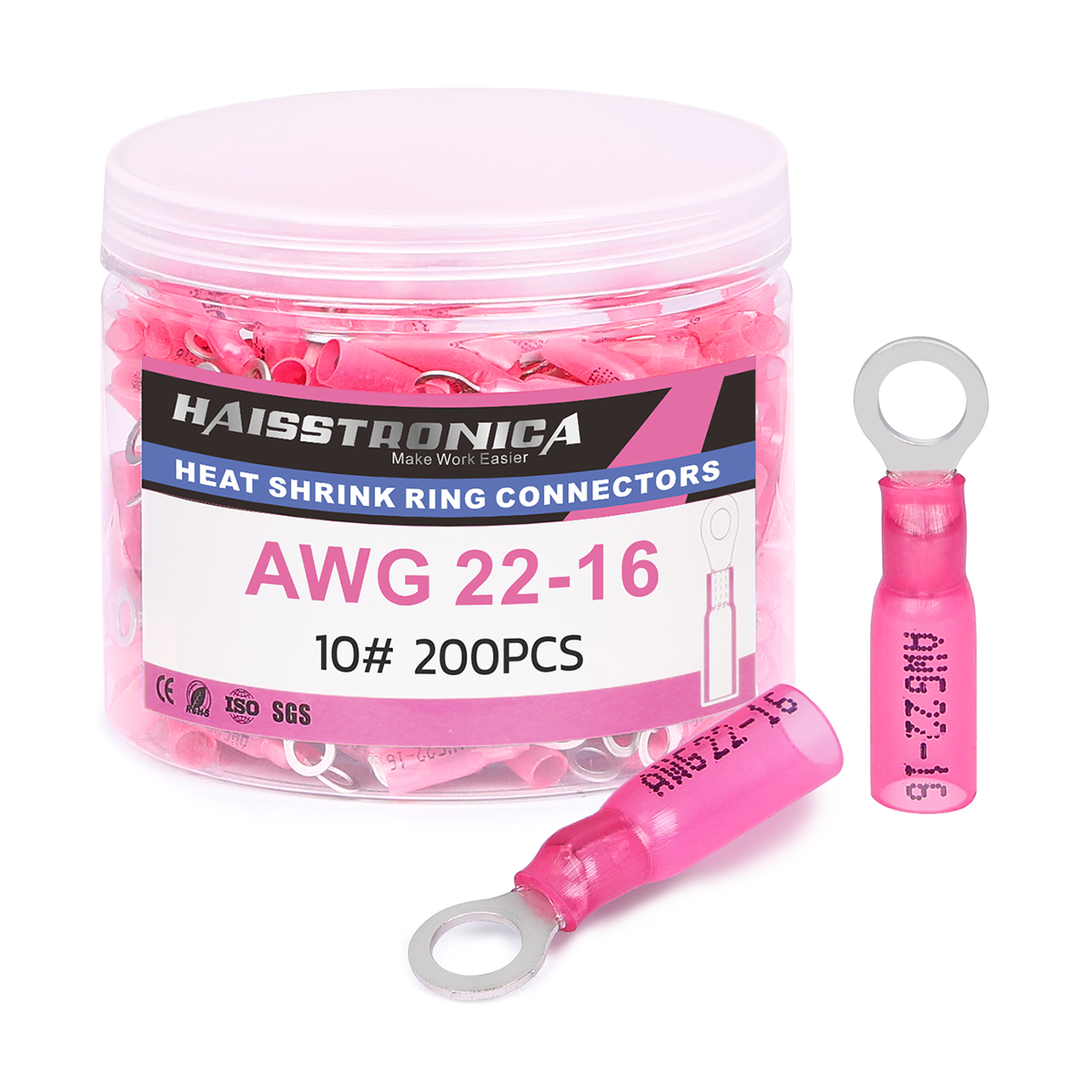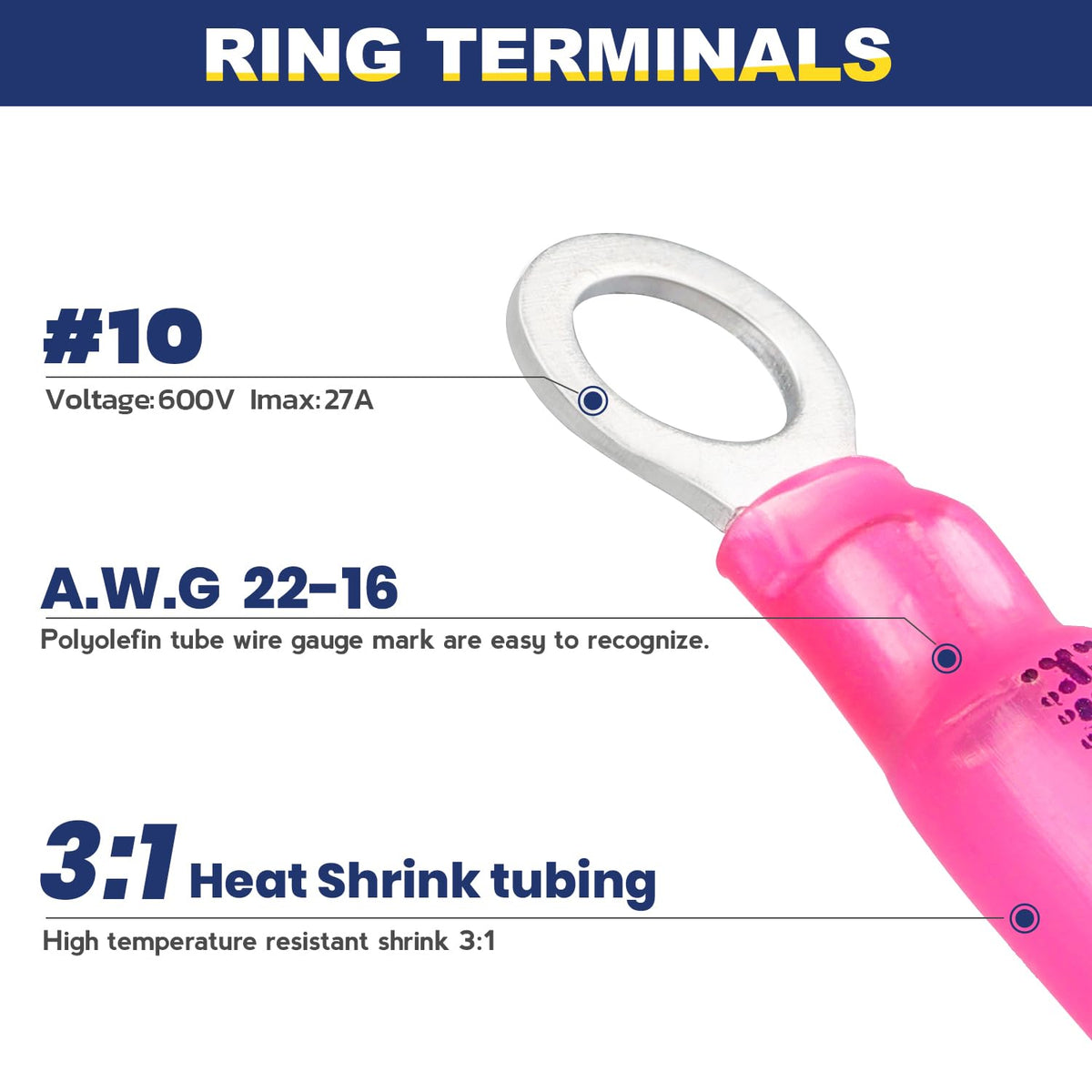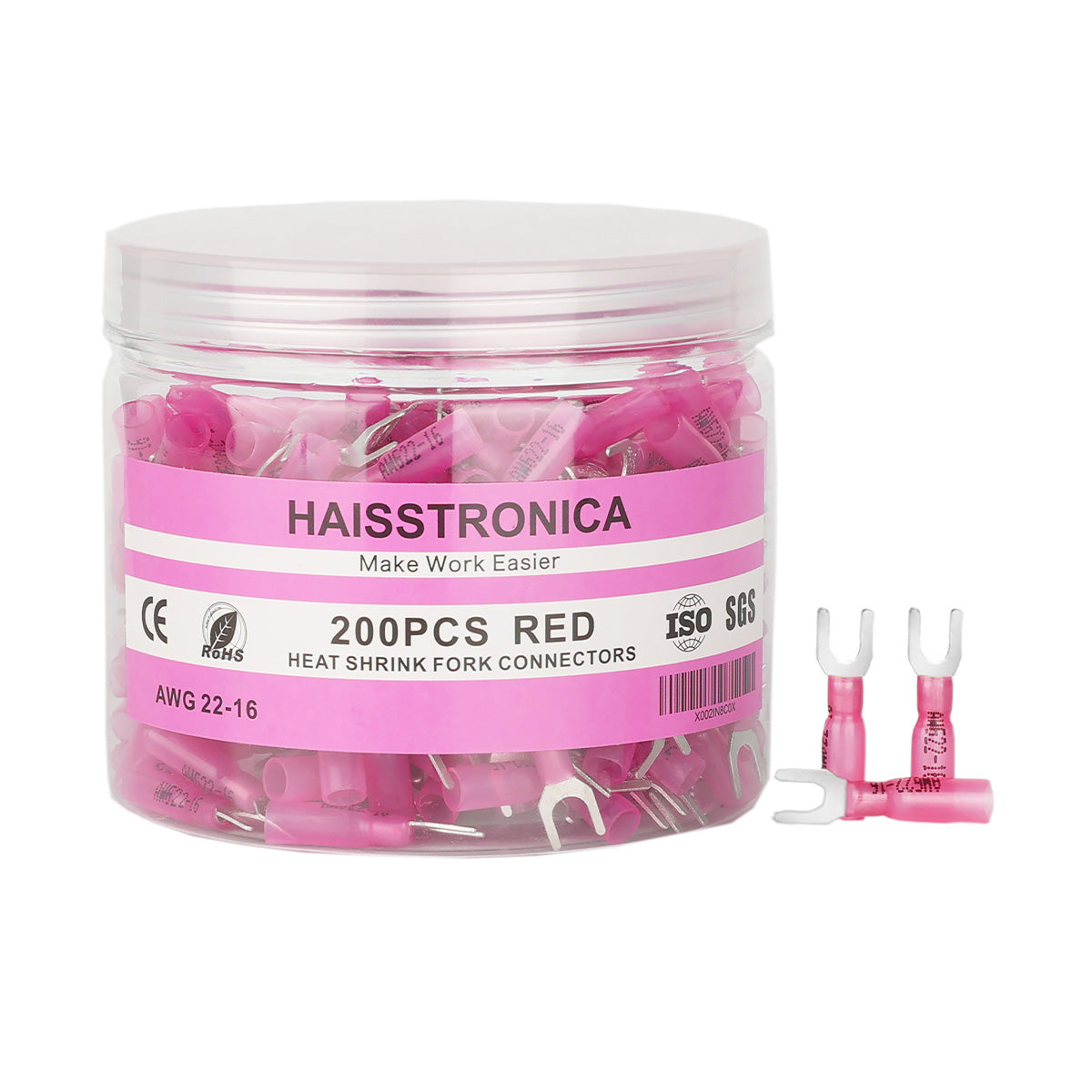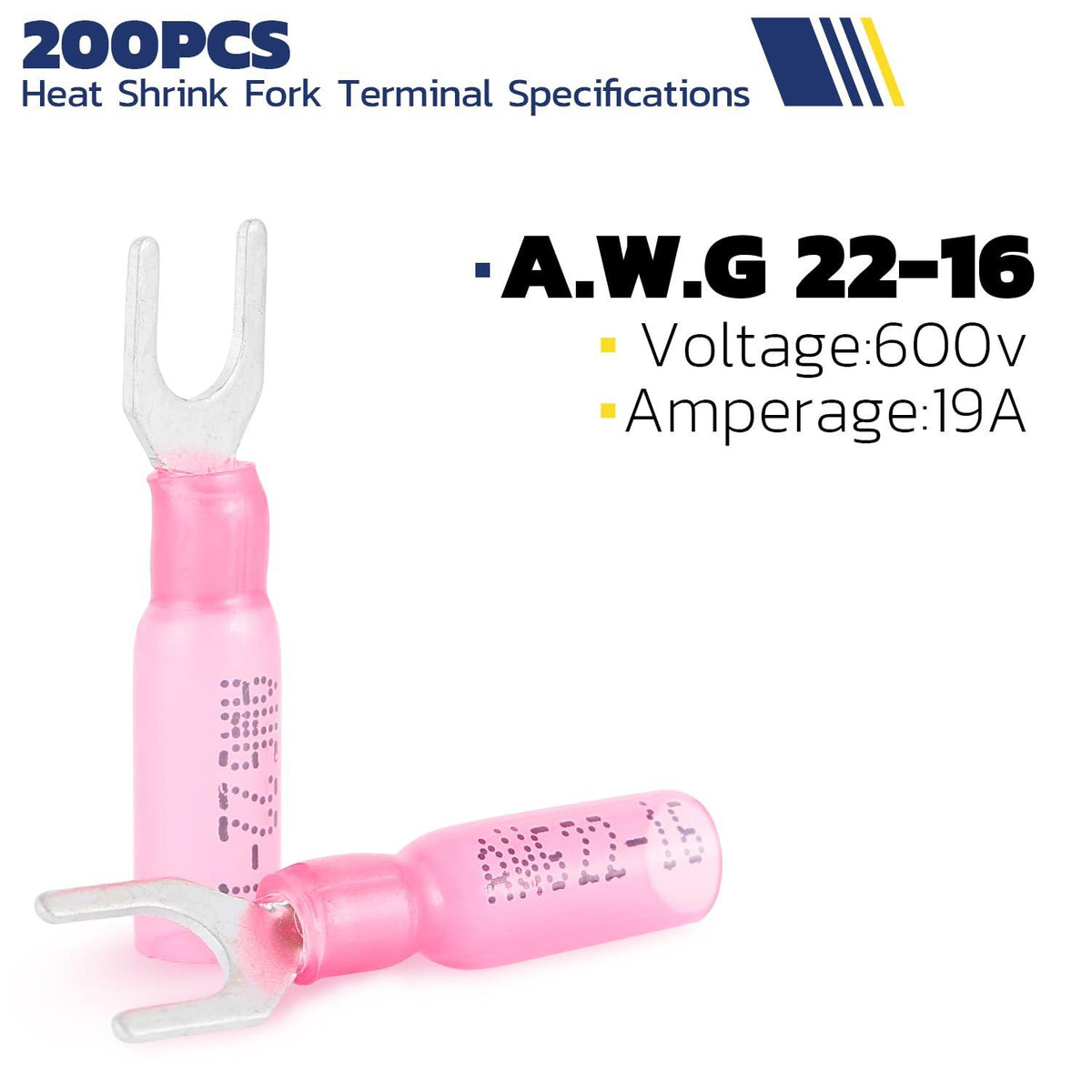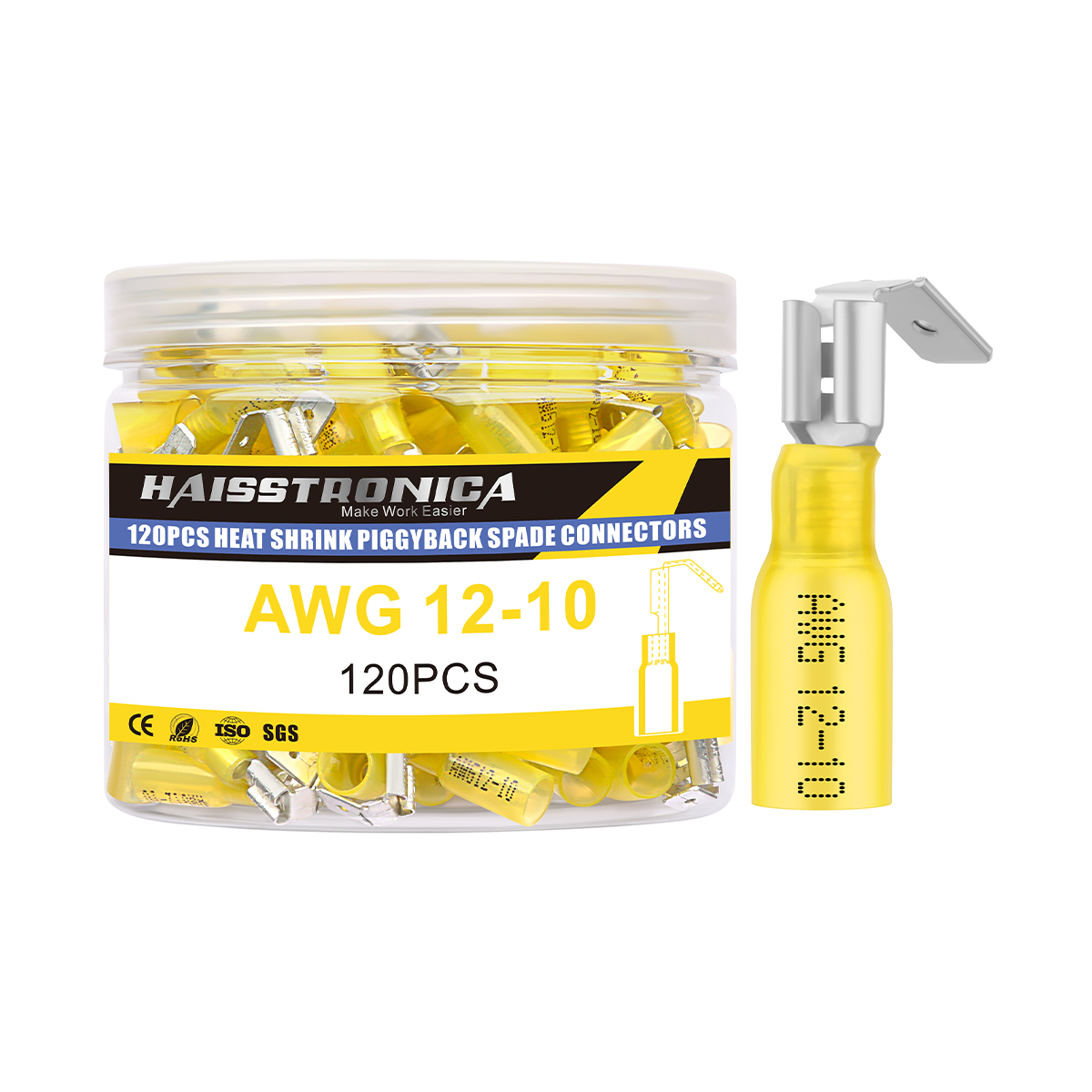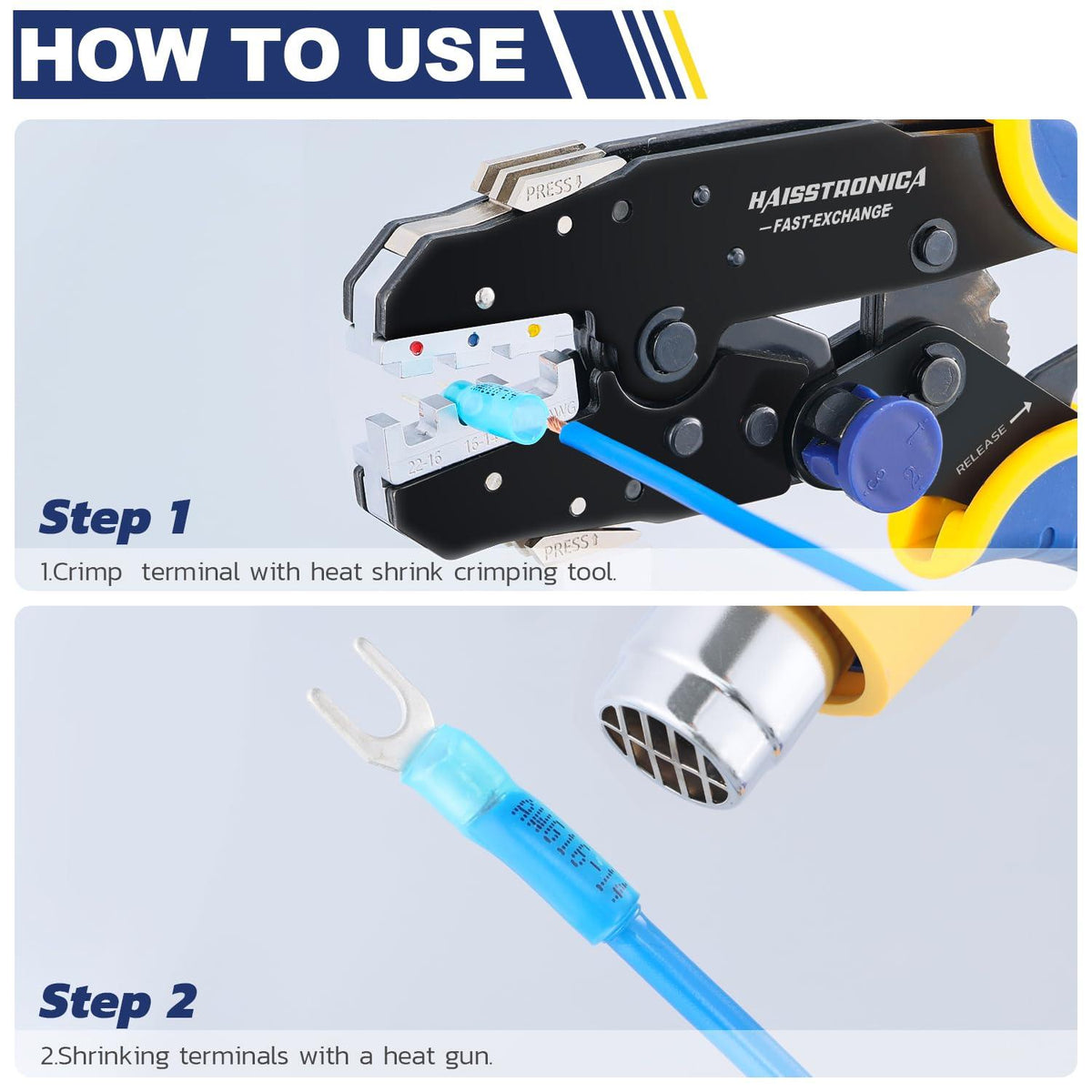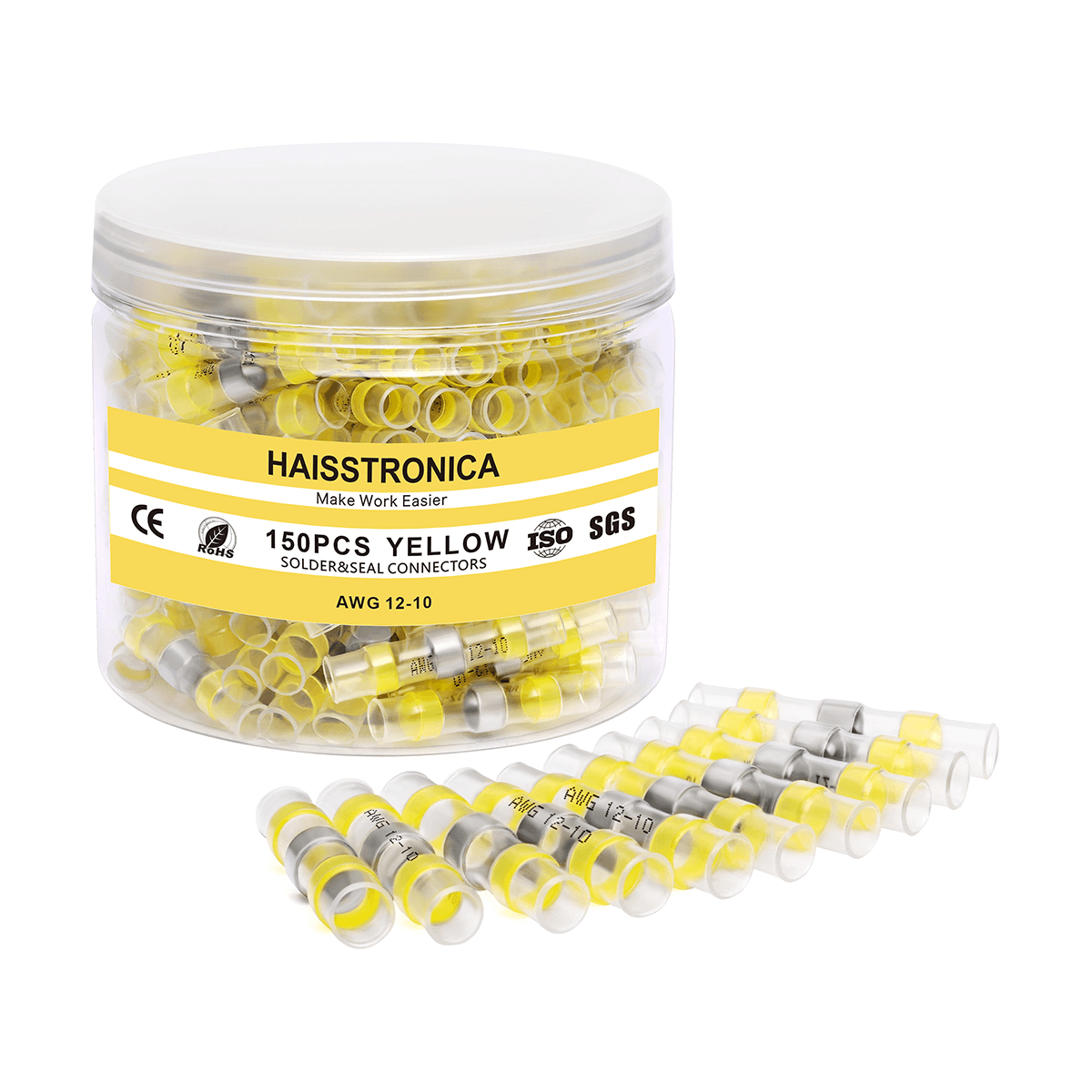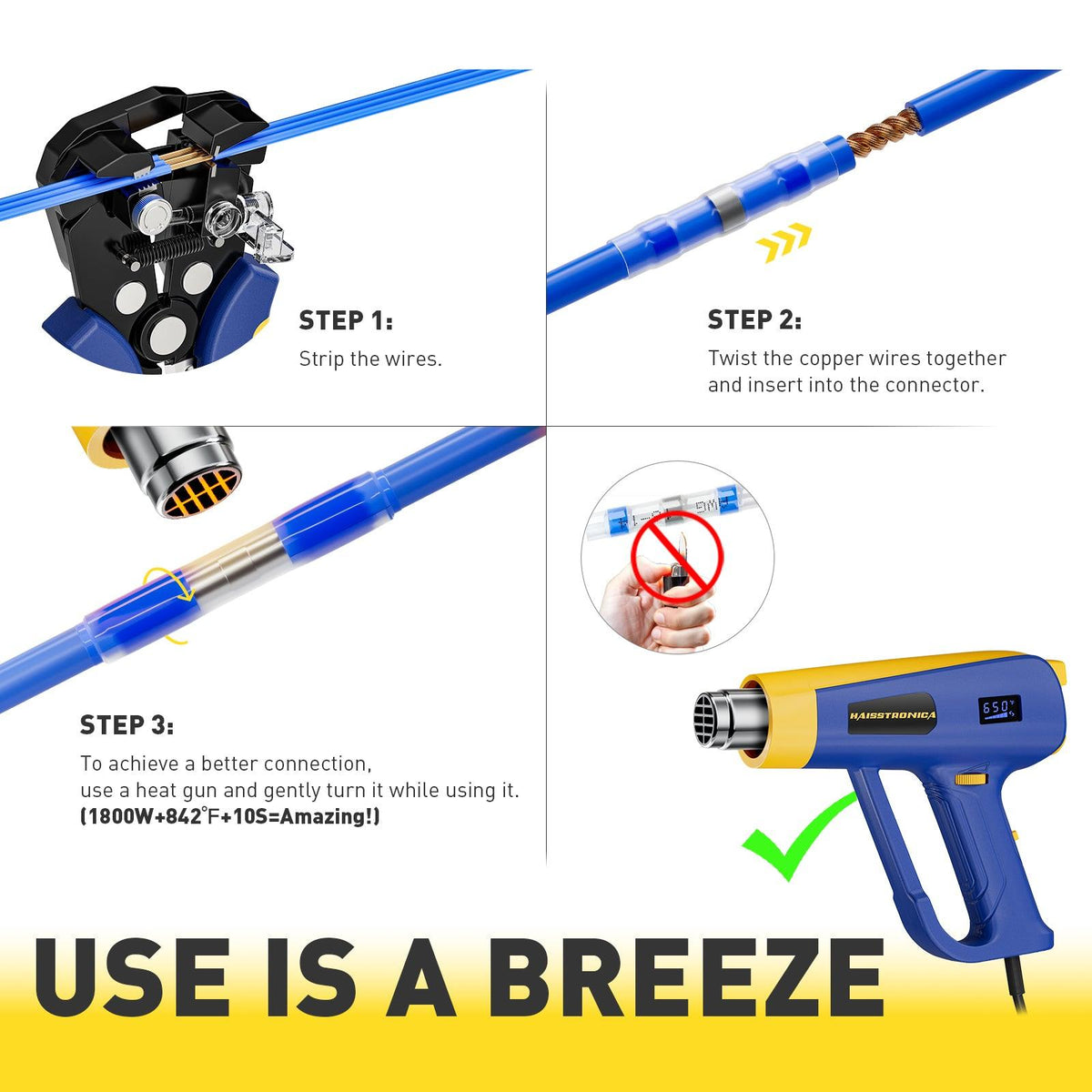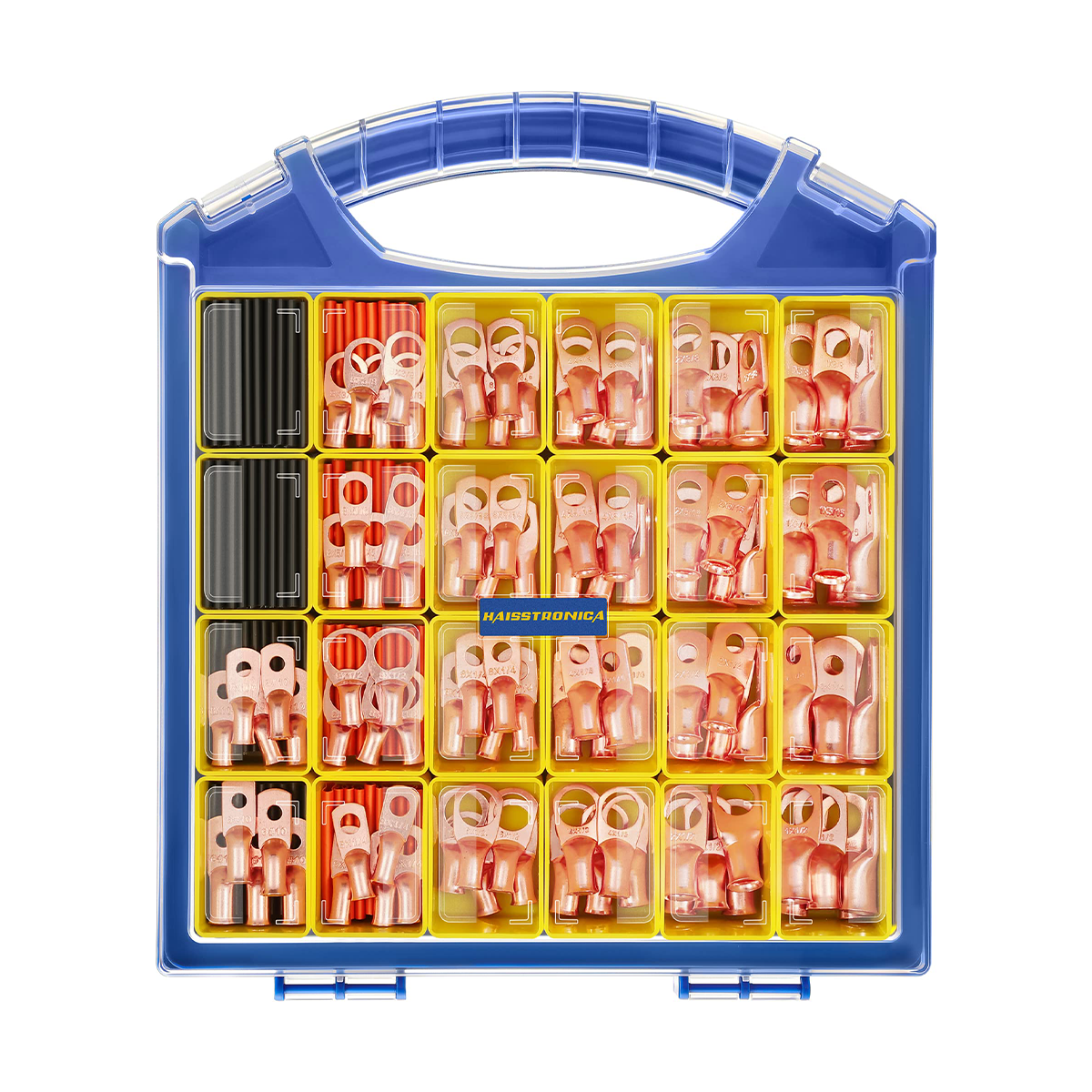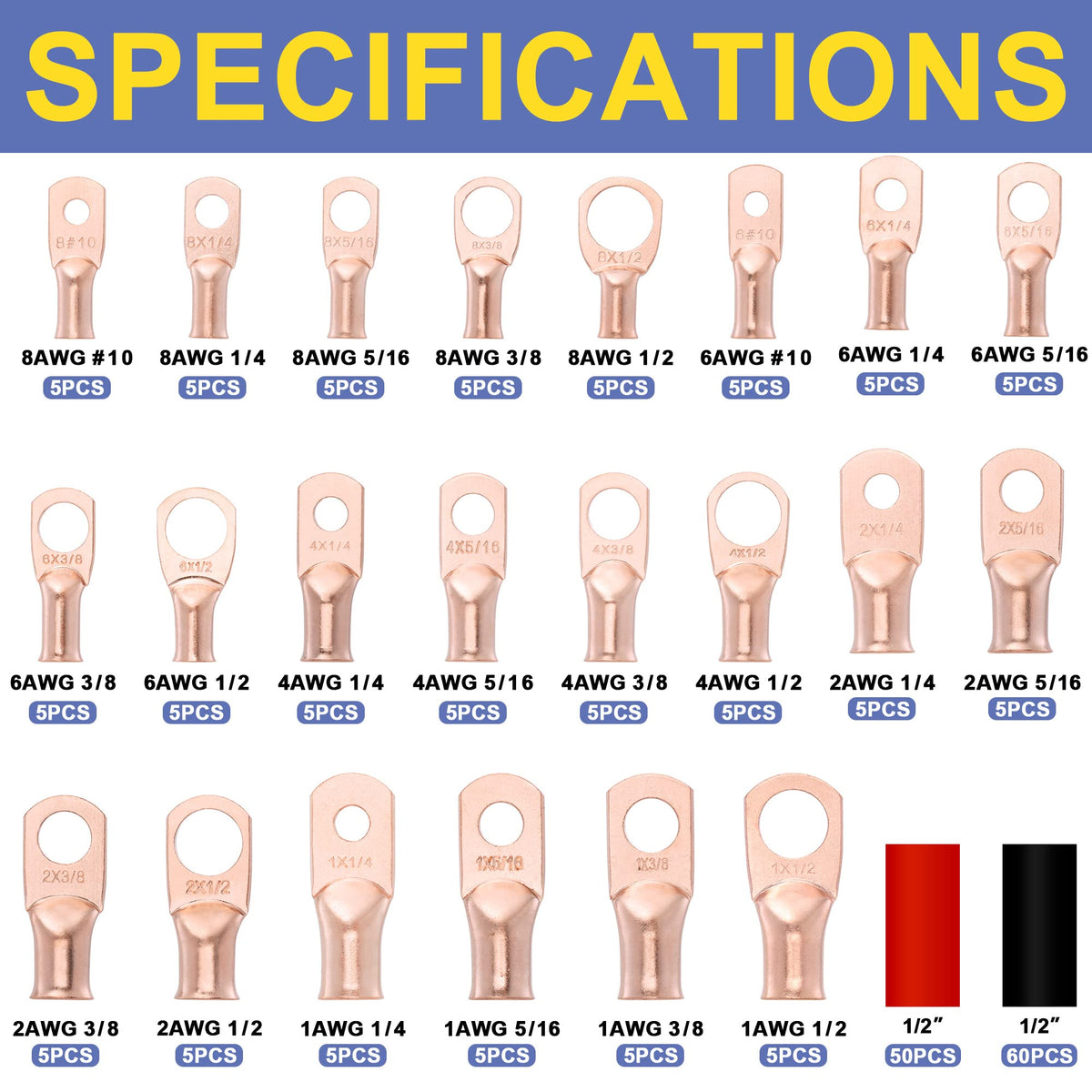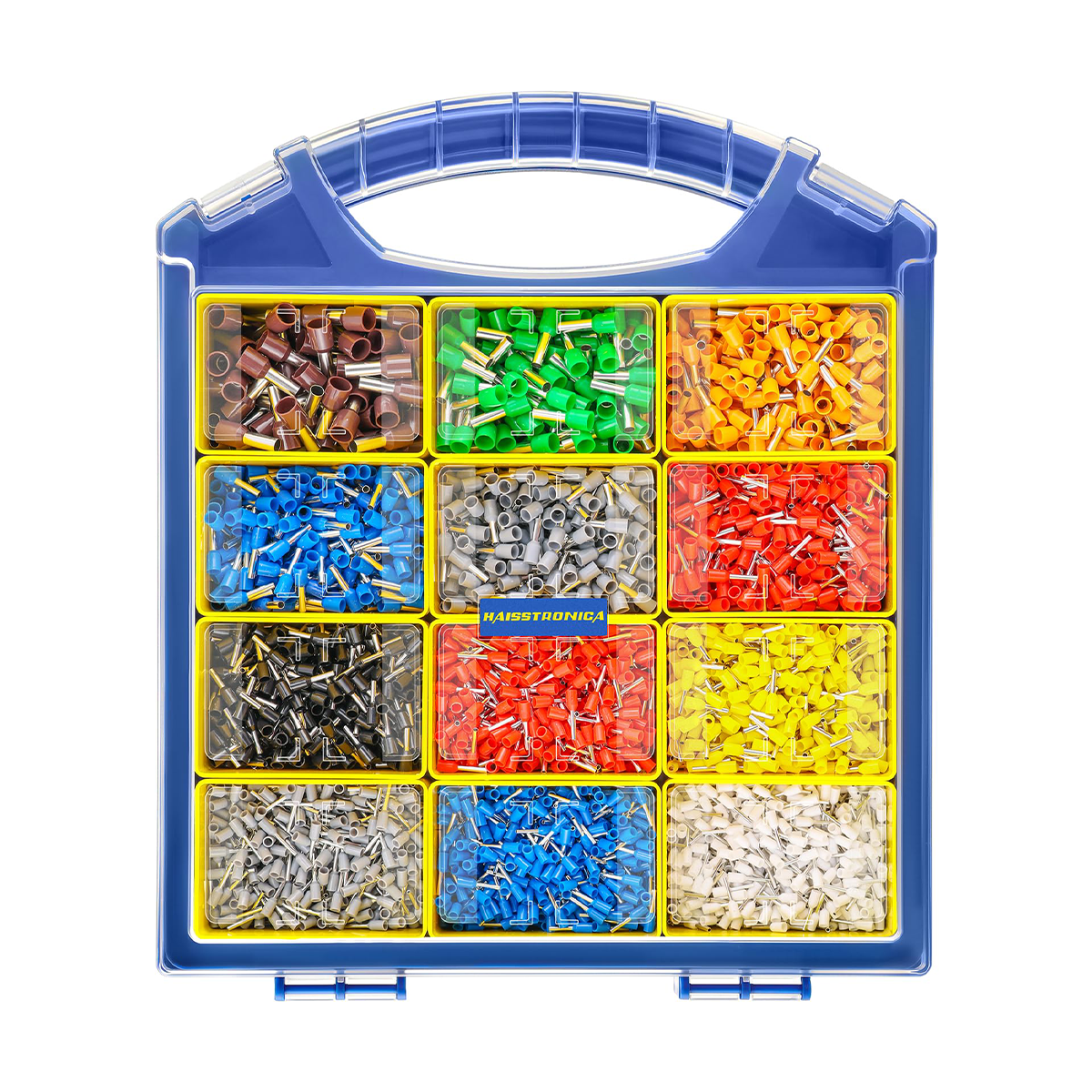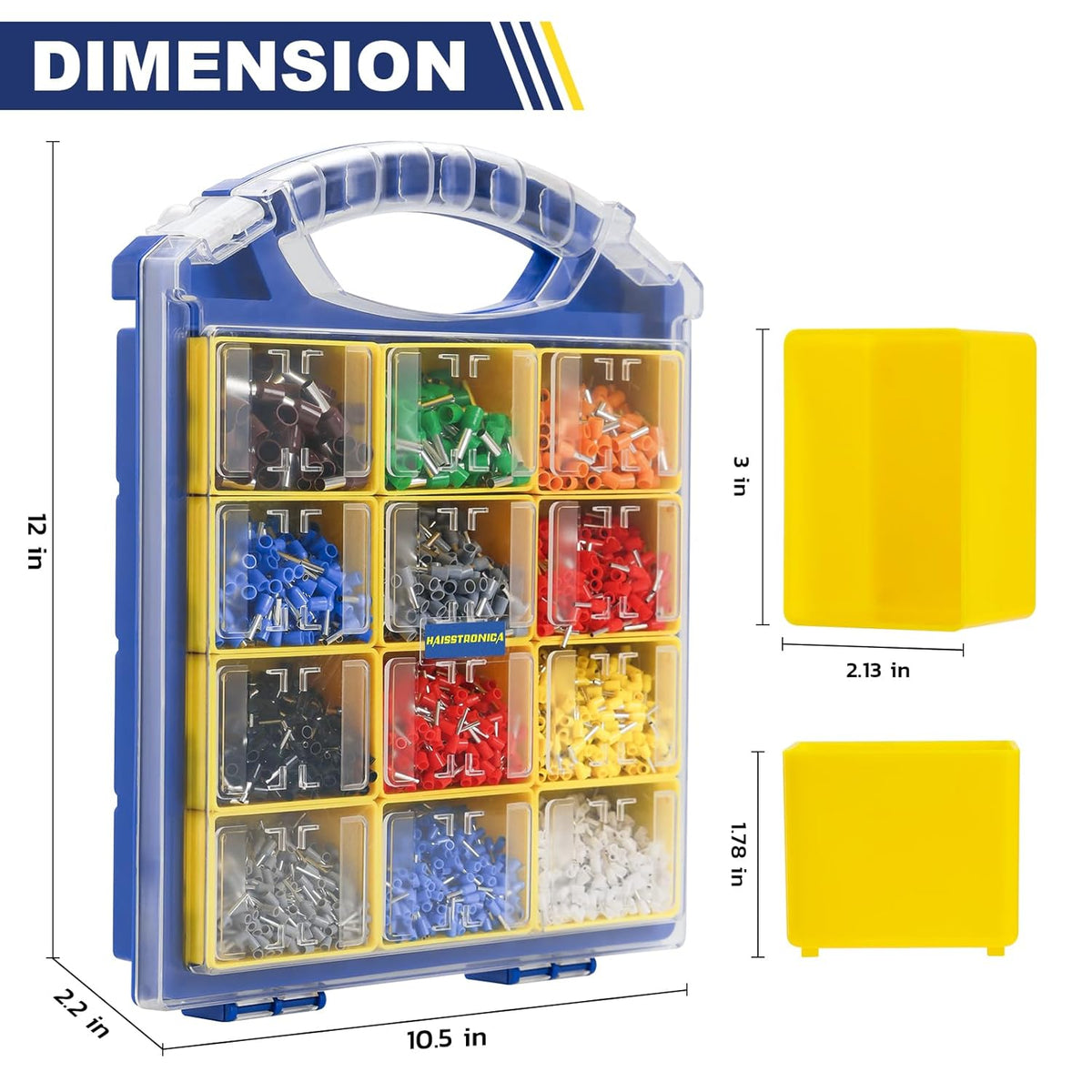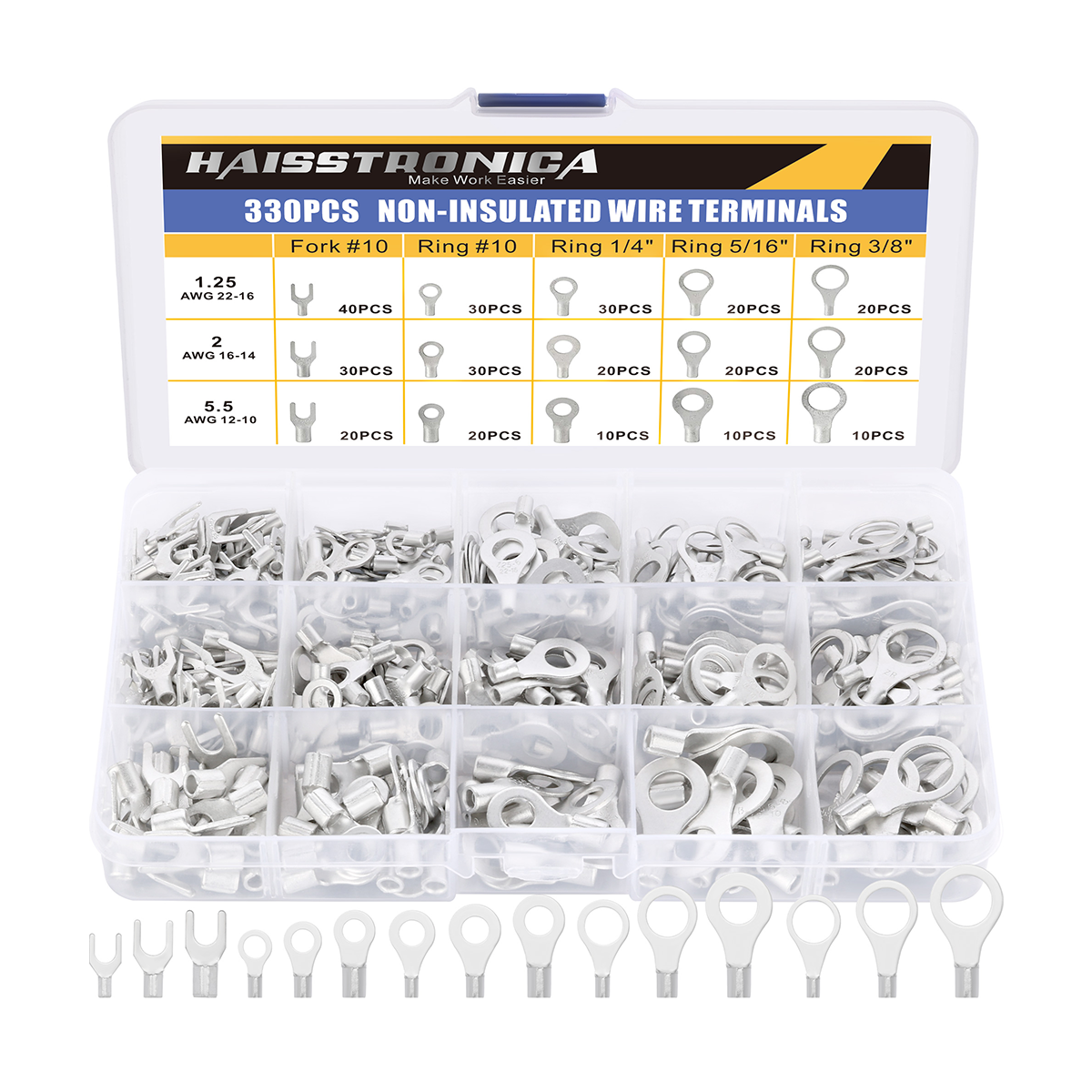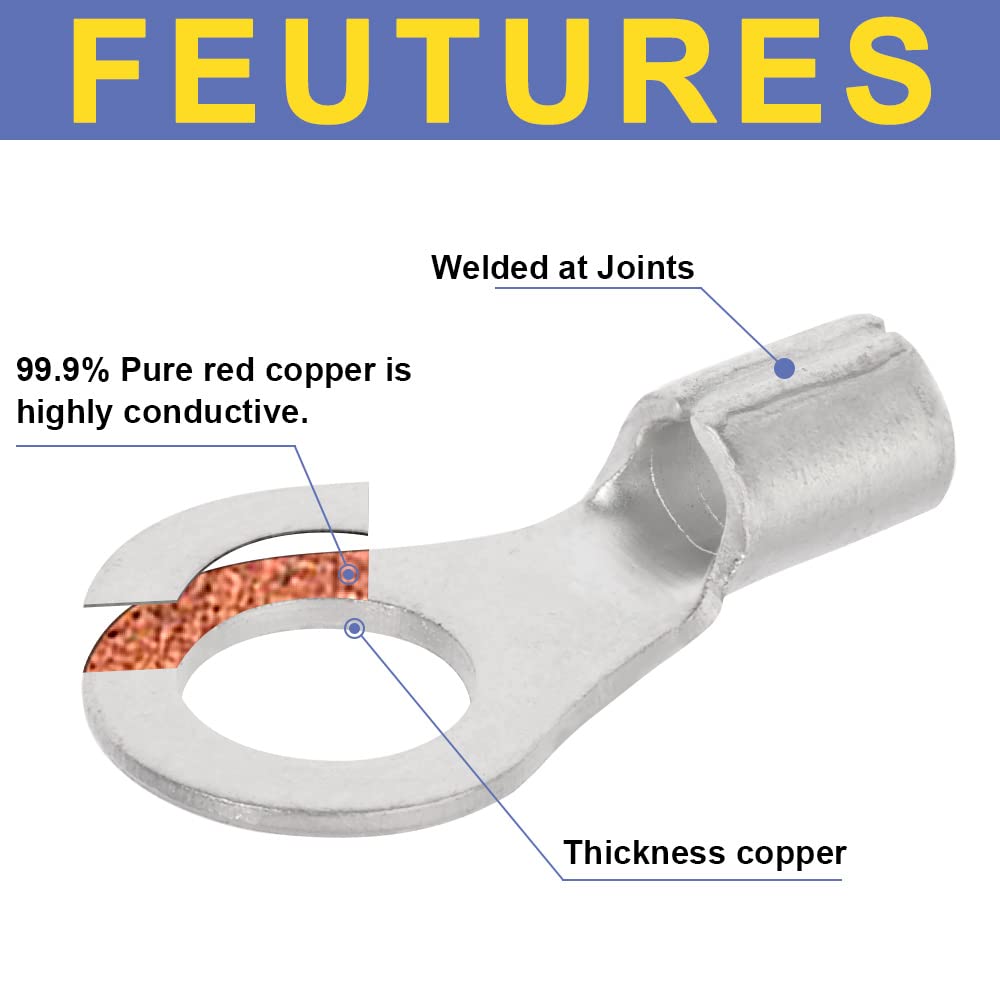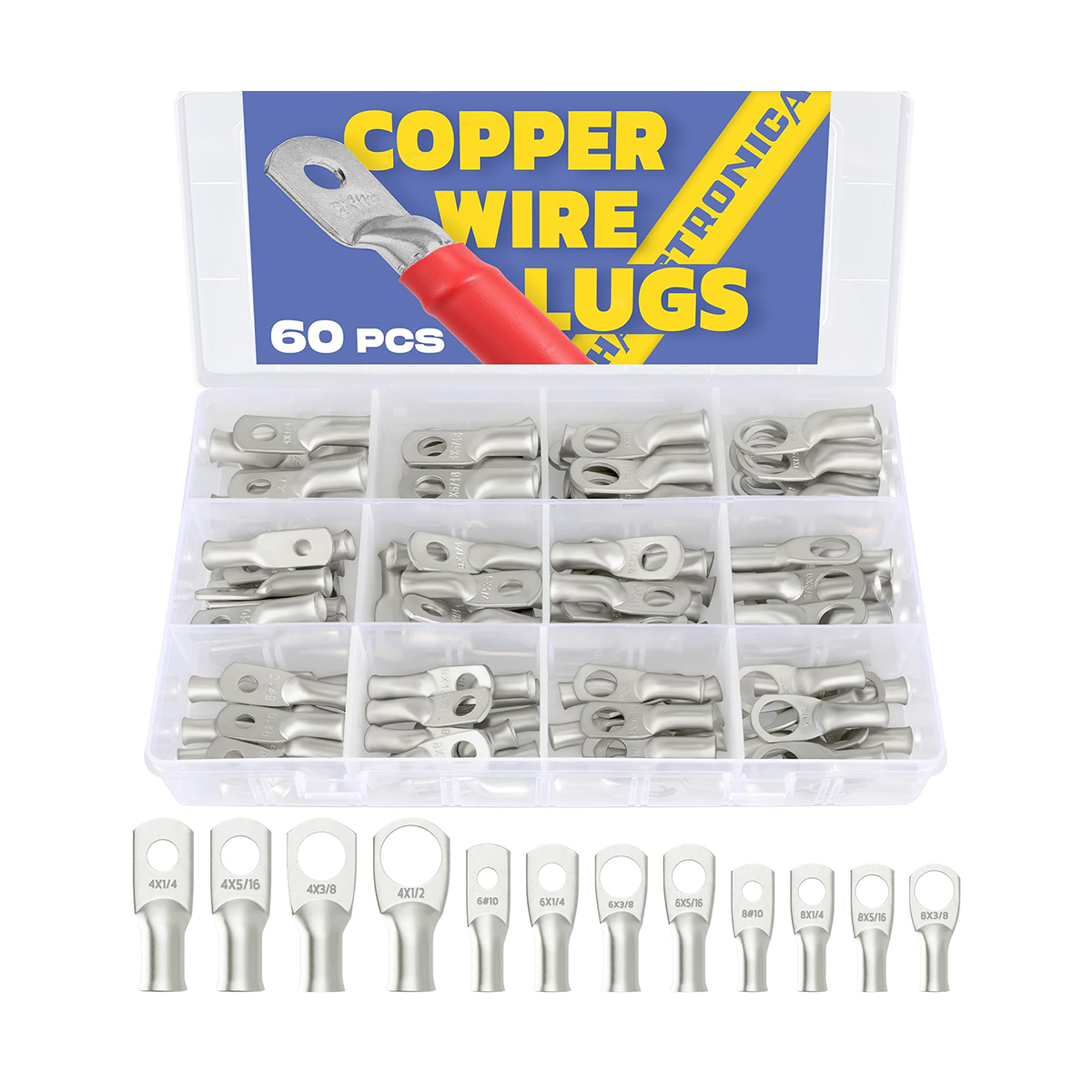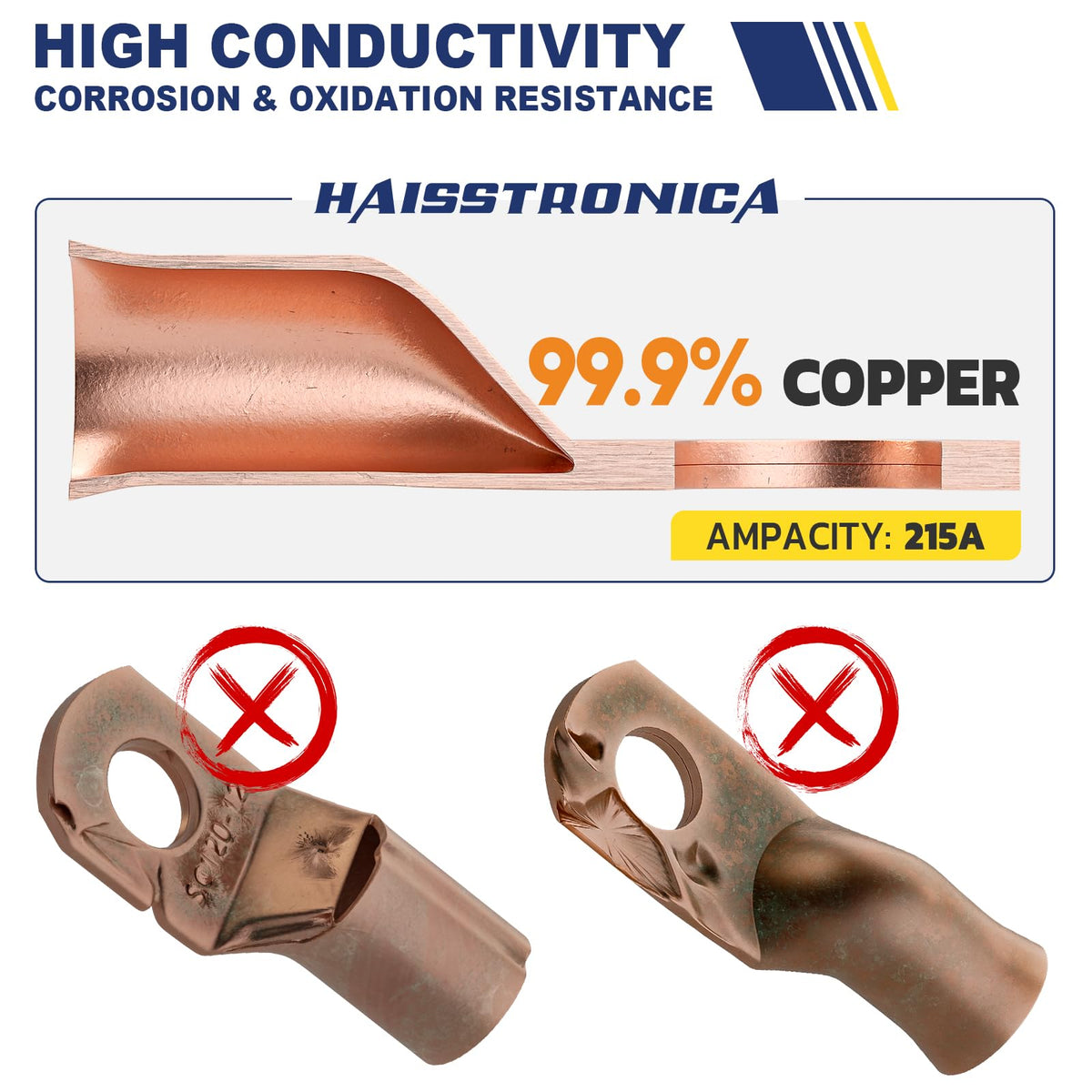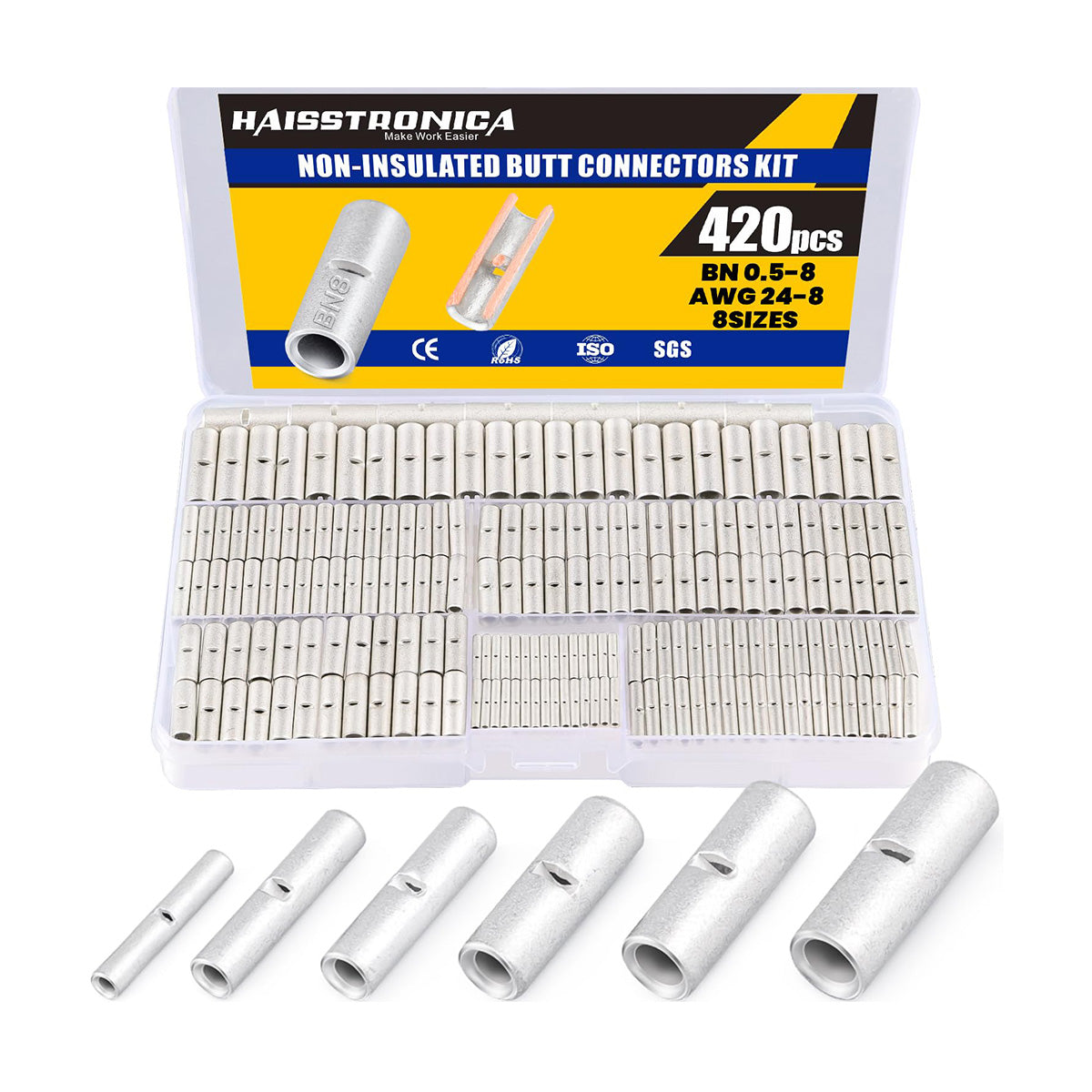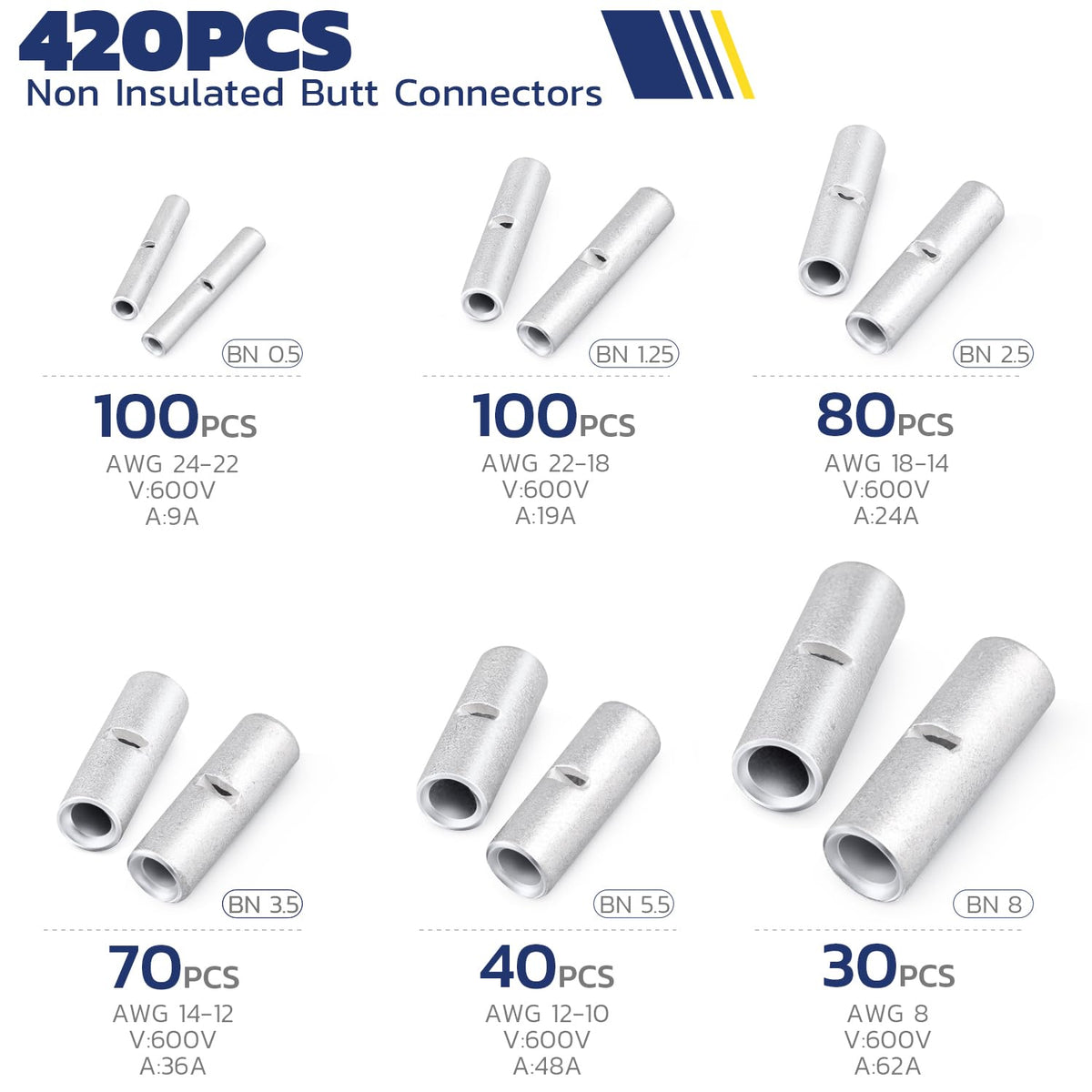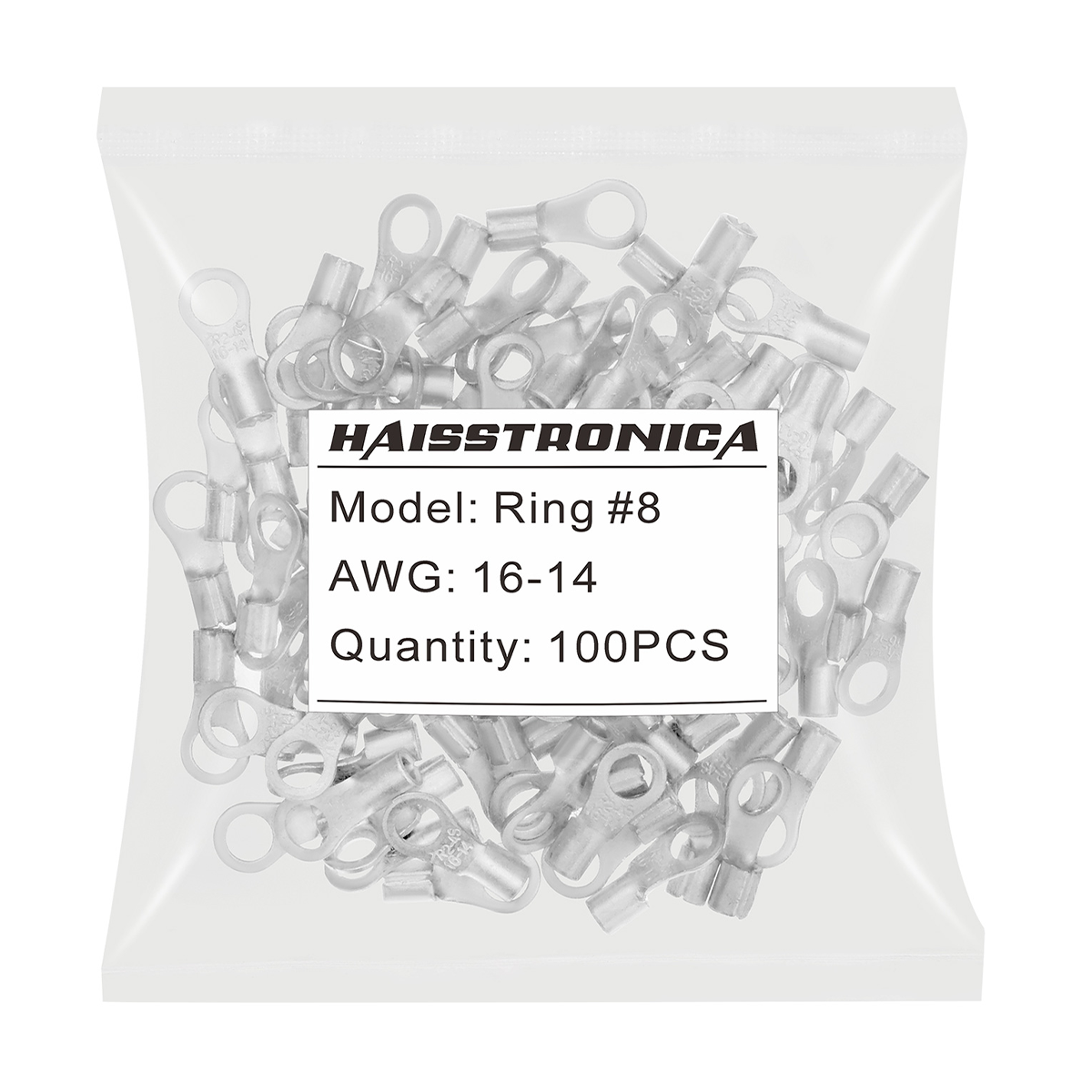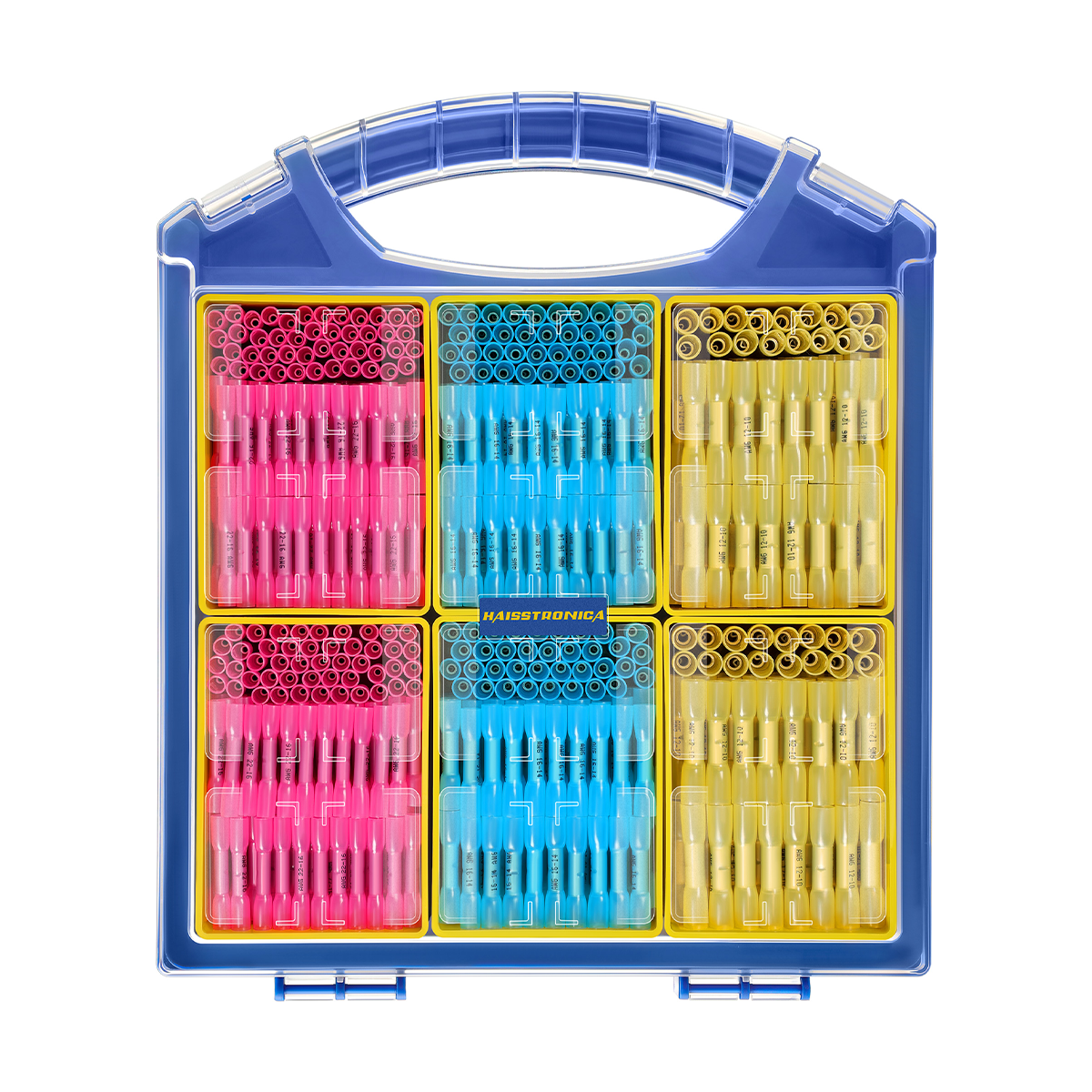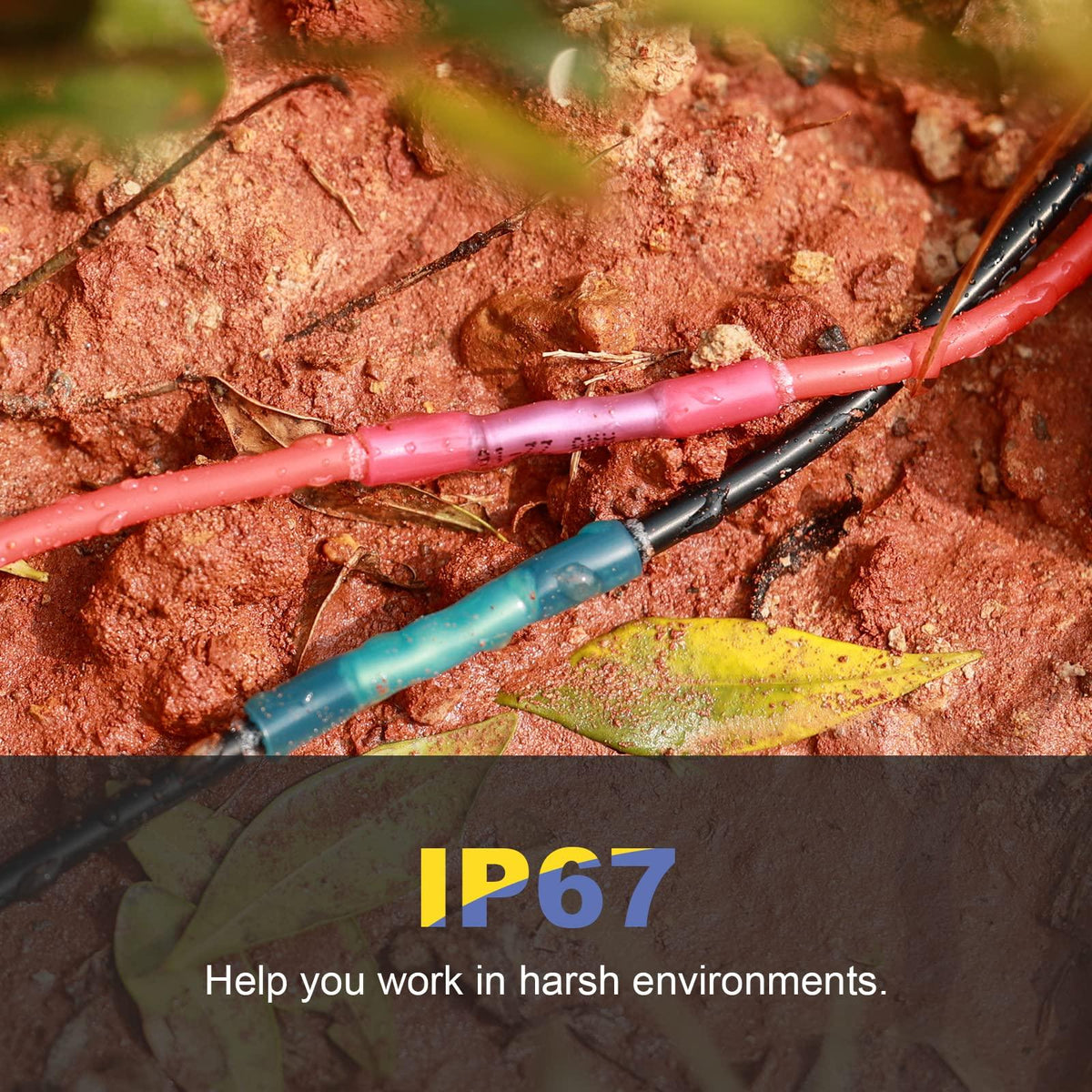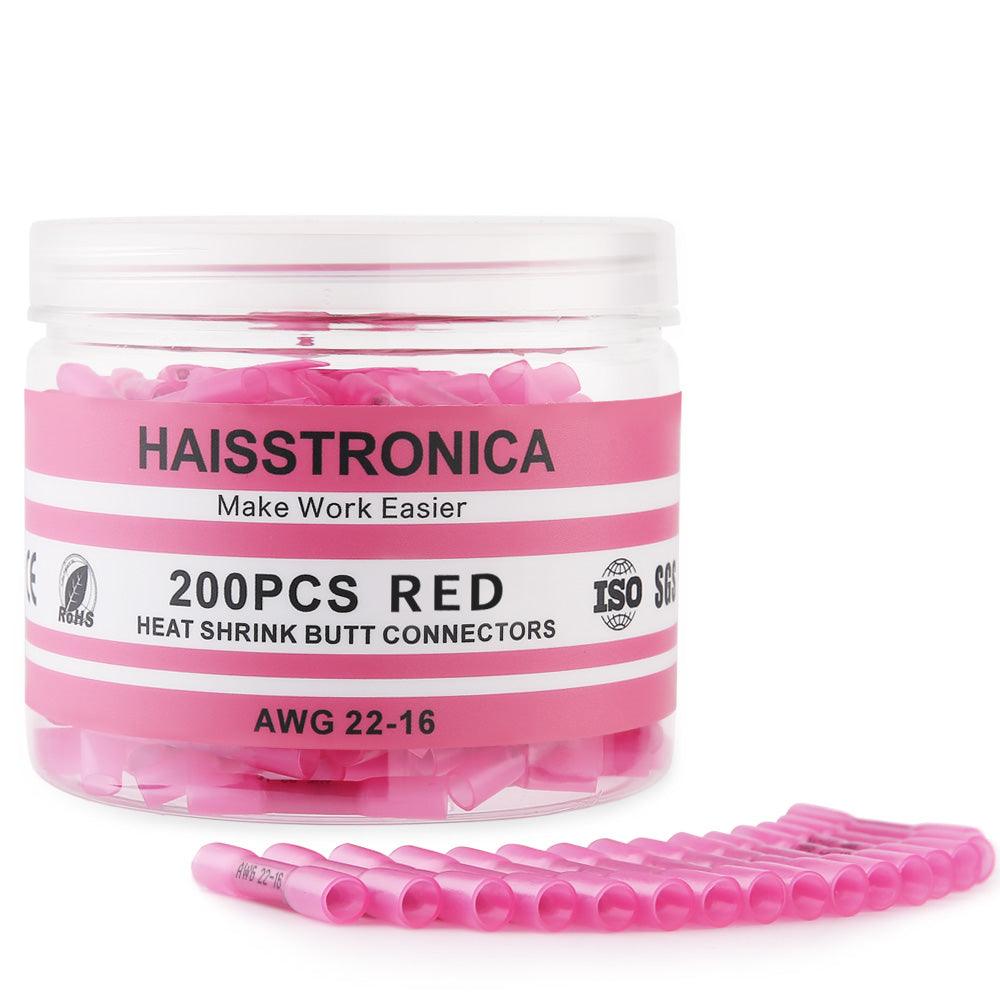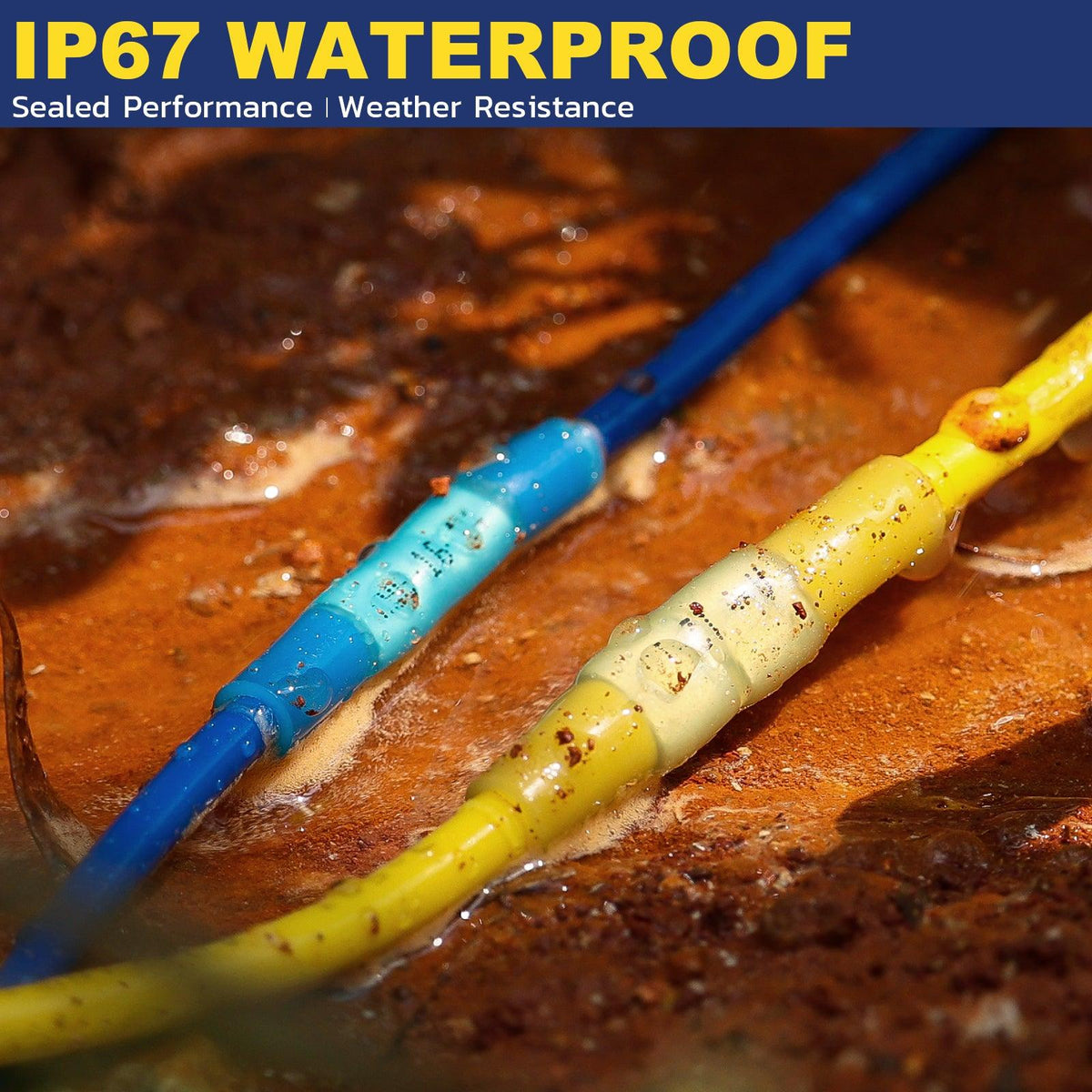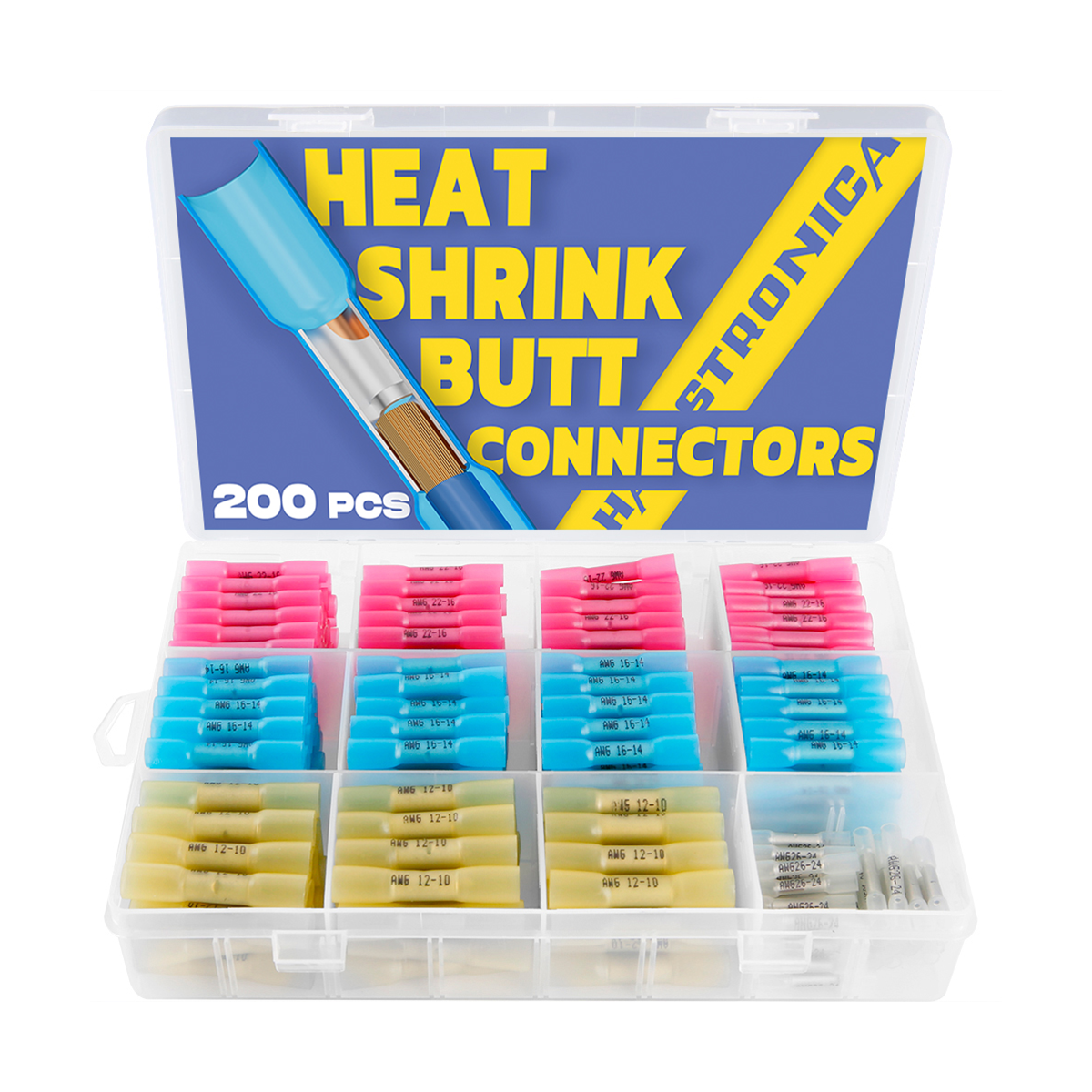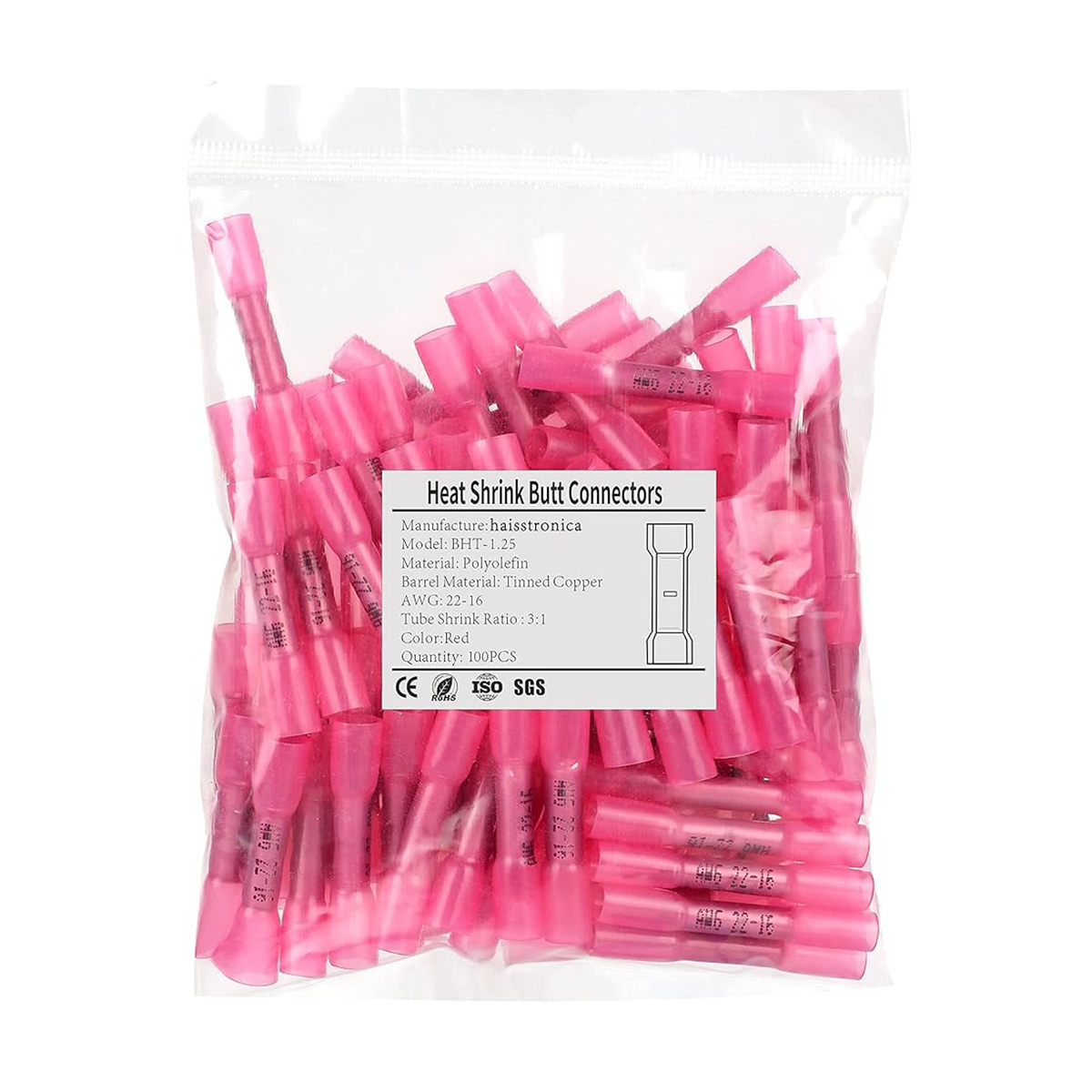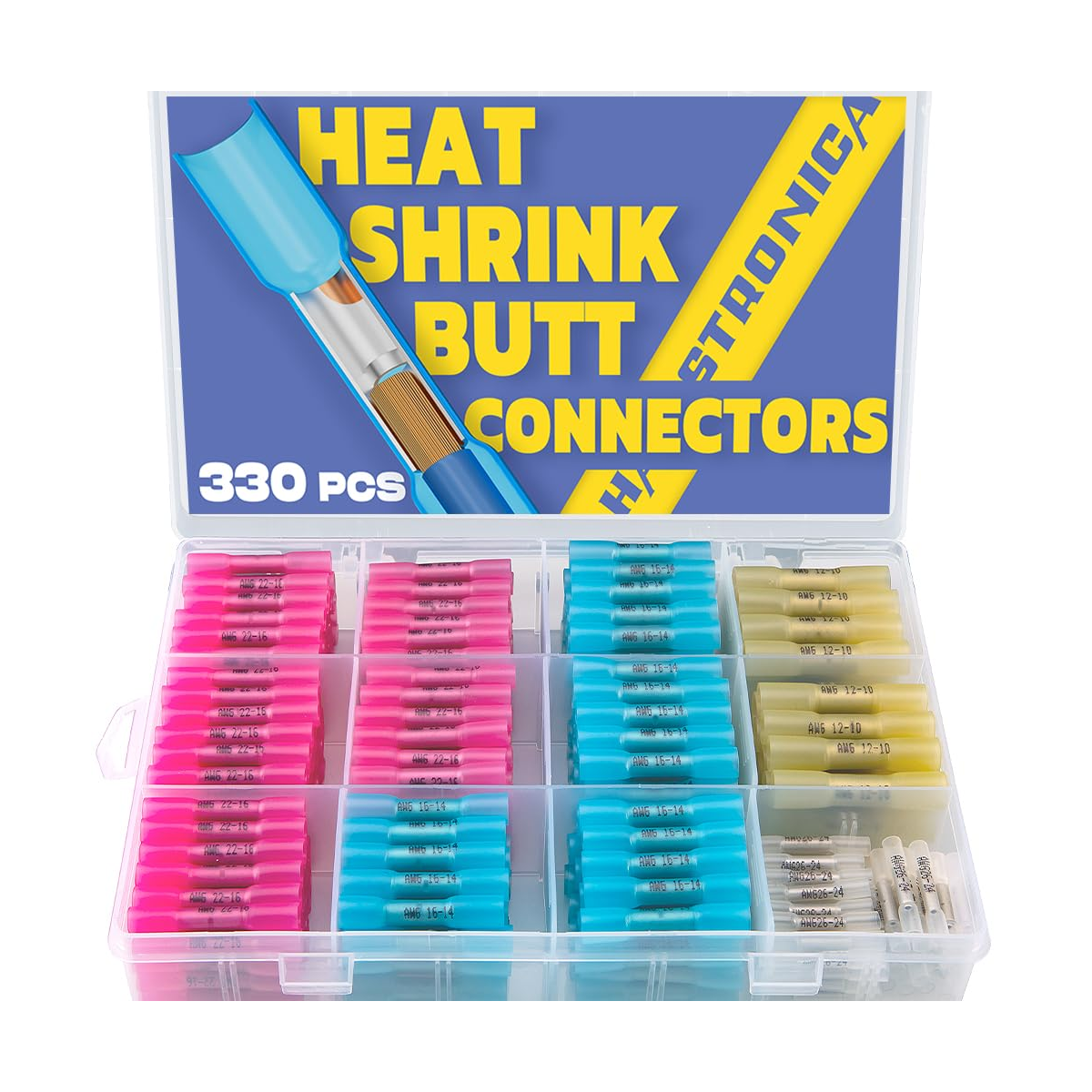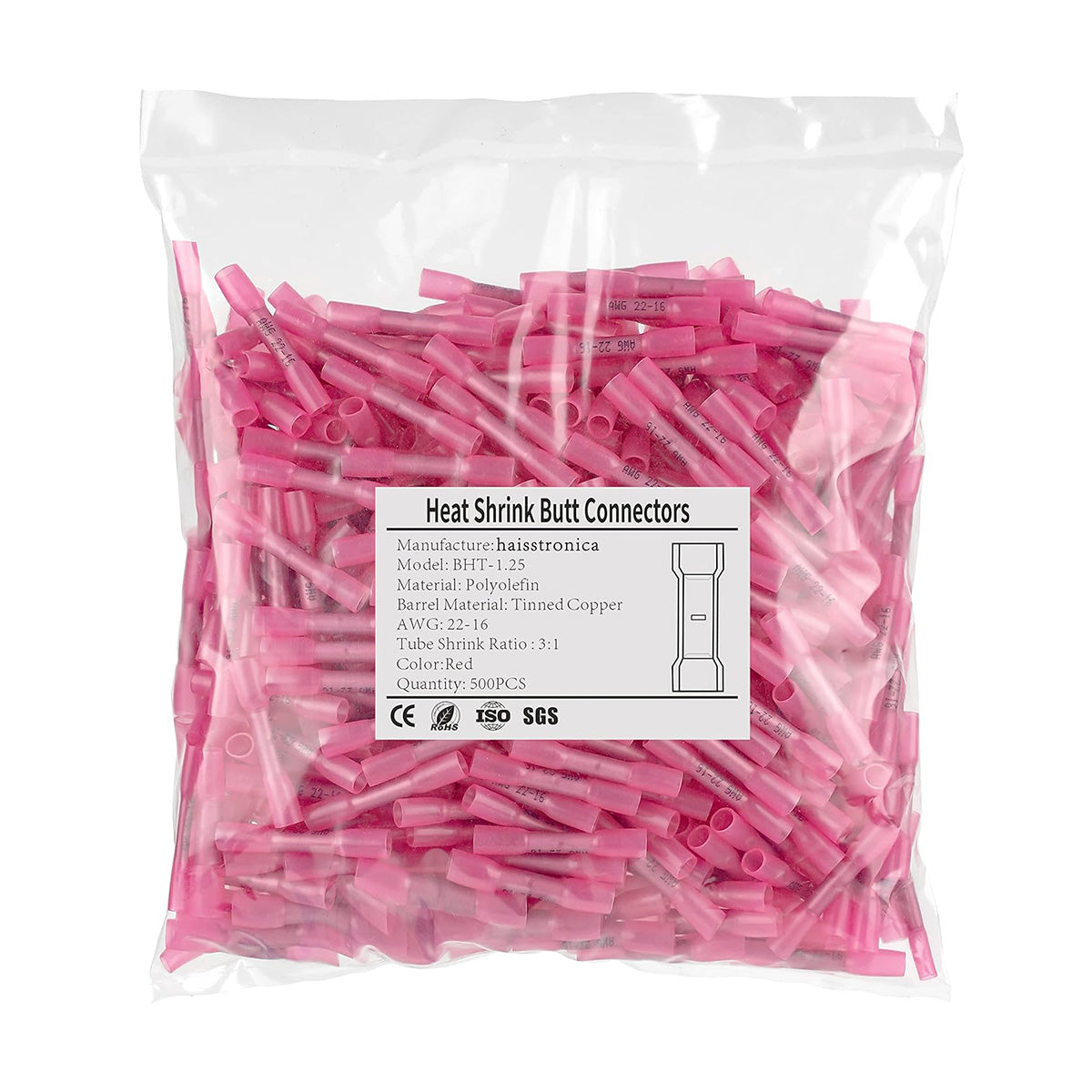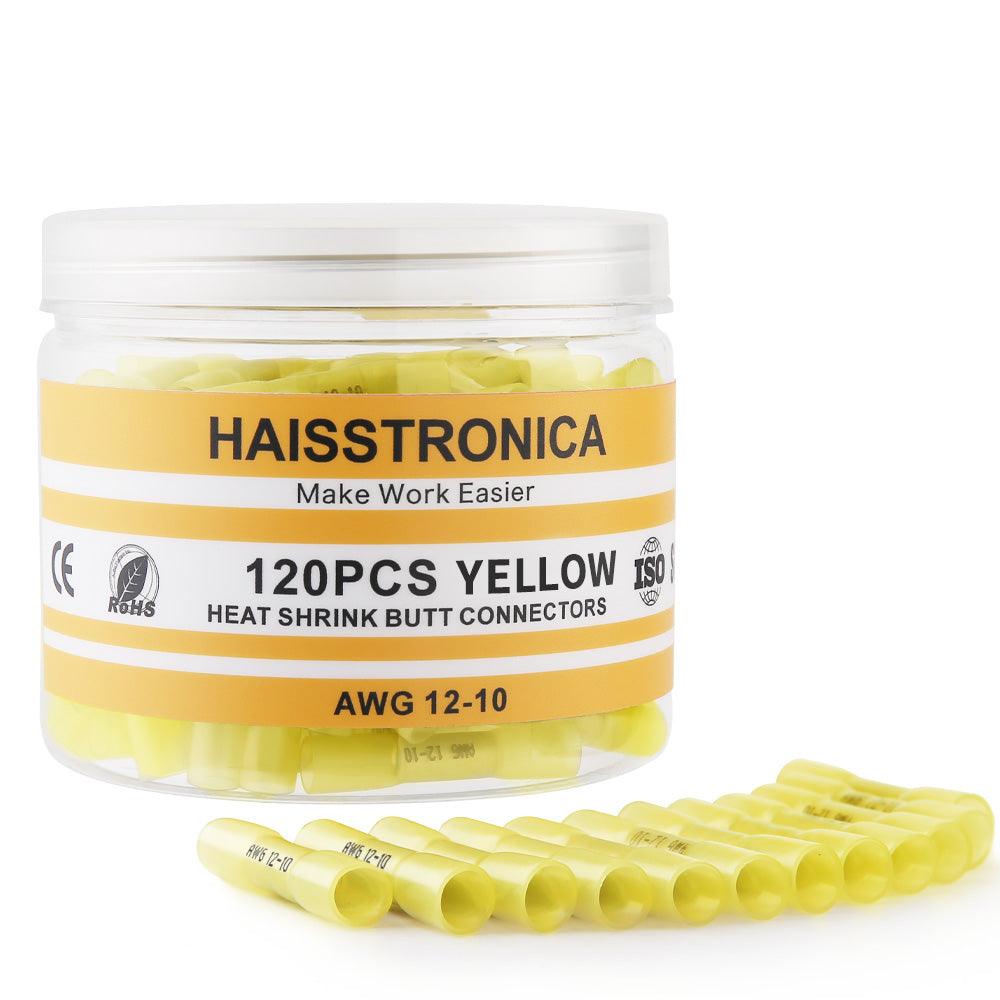Why Does Having the Right Die Matter?
A crimp die is what forms the shape of the crimp around a wire and a terminal, and there are lots of consequences to using the wrong die. These include ending up with a loose connection, damaged wires and electrical faults and failures. The right die will make sure there is a perfect bond that will better optimize electrical conductivity.
👉 Effortless crimping wire tool operation—Haisstronica’s smooth ratchet
Identifying the Connector Type
The first thing you need to check to ensure you are using the best die is to check the connector type. Different connector types require different dies, so knowing what the connector type you are working with is, is the first step to choosing the right die. Some common types of connector types include:
Non-insulated terminals
Insulated terminals
Butt splices, including heat shrink butt splice connectors, wire butt splice connectors and heat shrink solder seal wire connectors
Coaxial connectors
Battery terminals
Lugs
Fiber optic connectors
There are a few other things that you can do to check the correct die is being used- you can match the die to the wire size, ensuring that the die also corresponds to the connector’s crimp barrel size. Connector’s always come with manufacturers guides too, and consulting these will tell you recommended dies, crimp profiles and any pressure requirements.
The Best Dies for Each Connector Type
The best dies for these different types of connectors do vary, but the list below will help you to see which dies are best for some of the most common connector types. This by no means an exhaustive list, but will give you an idea for some of the most popular ones.
For non insulated terminals, an open-barrel (F-crimp) die is the best type to use, as is often the case with automotive and industrial wiring.
Insulated terminals usually use colour-coded dies that are blue, red or yellow.
Coaxial connectors use a coax-specific hex die that is matched to the cable type.
For battery terminals, a hex or double crimp die is the best to use.
Butt splices can be matched with a color-coded or a hex die.
Fiber optic connectors use a precision die that is tool-specific.
Ferrules often use a square or trapezoidal die.
Copper lugs use a 6 point hex die, this is very common in power cables too.
Wire Size and Crimp Tool Compatibility
Your next step in choosing the right die should be to look at matching the die to the size of the wire. This has to be a perfect match, as dies that are too small won’t be accepted by the wire, and oversized ones won’t crimp tightly enough to work. Dies are marked with gauge ranges so you can see the size before choosing one.
It is important to remember that not all dies fit every crimp tool, and care should be taken to ensure that your crimp tool is compatible with the die you want to use. You should check die dimensions, mounting style and the pressure rating if the tool you are using is hydraulic.
👉 Lock in reliable wire crimps connectors with Haisstronica accuracy.
Thinking about Application
The next step in choosing the right die for connector type is to consider the environment that the crimp connection will be exposed to. For example, is it going to be exposed to vibration in a car? Or moisture/corrosion if used under the water, or even extreme temperatures. The die you choose must be suited to the environment that it is going to be used in, considering using things like heat shrink tubing or dies that support sealed connectors.
Testing
Once you have chosen the die that you are going to use, you need to do a few tests- both visual and mechanical, to ensure that it is safe and going to work without any faults. Firstly, test the mechanical strength of the die by pulling it. Then, take a close look at the die and connector- is it shaped correctly? Any damage that you can see? In some cases, a microscopic inspection may also be necessary to check that there are no air gaps.
A Final Tip
Before choosing your die, you should also consult the manufacturer of the connector. Their datasheet will tell you everything you need to know about suitable dies for that specific connector, including the approved wire range, compatible crimp dies, tools that you can use and any test requirements that may be necessary for verification. This is your best friend when guiding you through the process of finding the right die for your connector type.
Our Top User-friendly Picks
Get shop-grade results from compact ratcheting wire crimpers. A strong pawl locks pressure so even tough leads seat perfectly, and optional dies support 6 gauge wire crimpers tasks. Ideal as your go-to automotive crimper for under-hood and trailer wiring.
👉 One wire crimp tool you’ll trust—Haisstronica, calibrated for results.
Conclusion
Choosing the right die for a connector isn’t just about matching up wire sizes, but also about having an understanding of the connector you are using, how you are going to use it and the tools you have to hand to use. We have given you lots of tips and things to consider in this blog post for choosing the right die, and also a rough guide of the common best dies for each connector type. You can, however, also utilise the manufacturers datasheet for your connector to find out the exact specifications for the best die to use with it.


